Tim-D-AmazonBookPubl 8.1 to 9.3
Tim-D-AmazonBookPubl 8.1 to 9.3 - Part 1

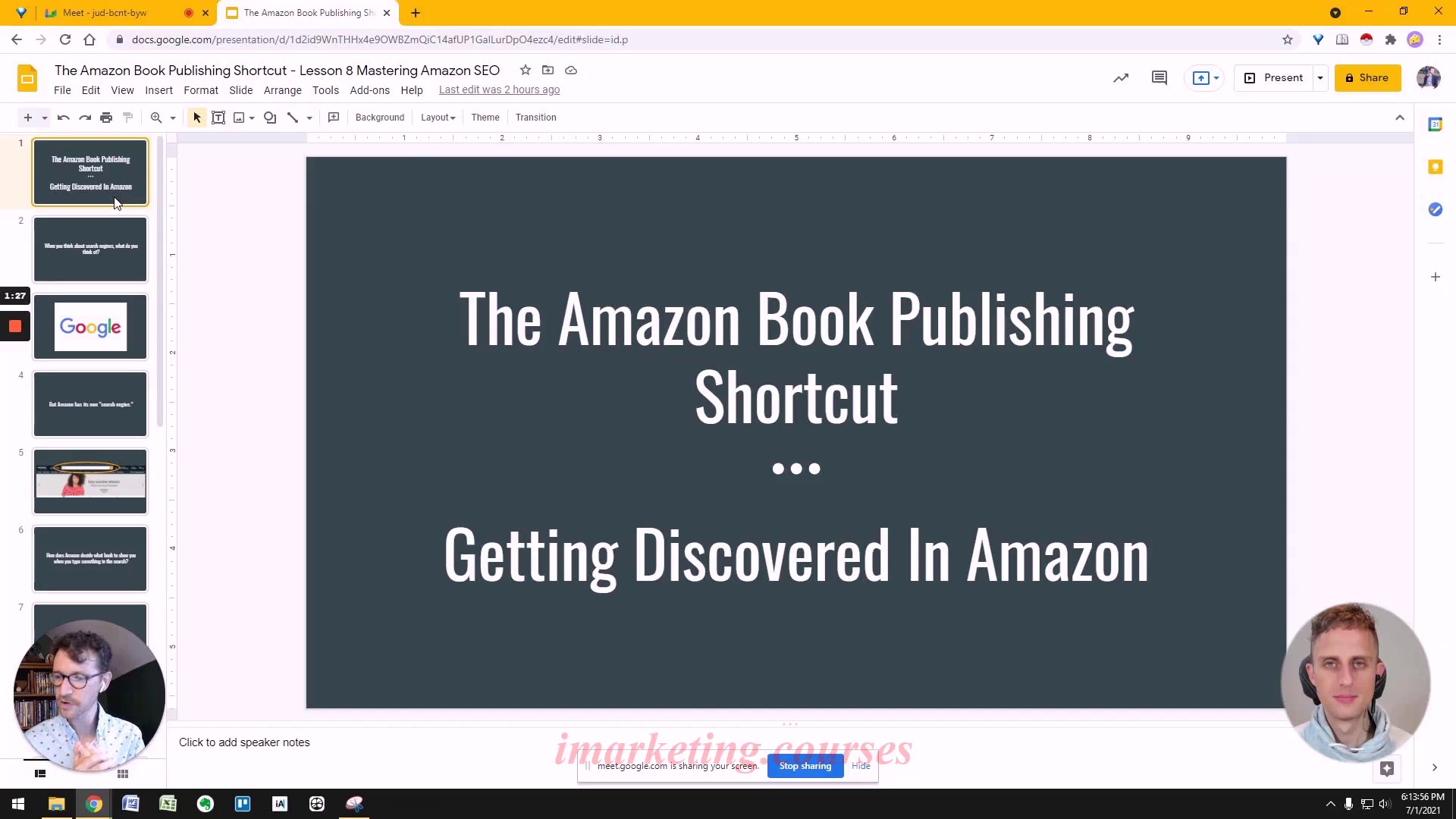
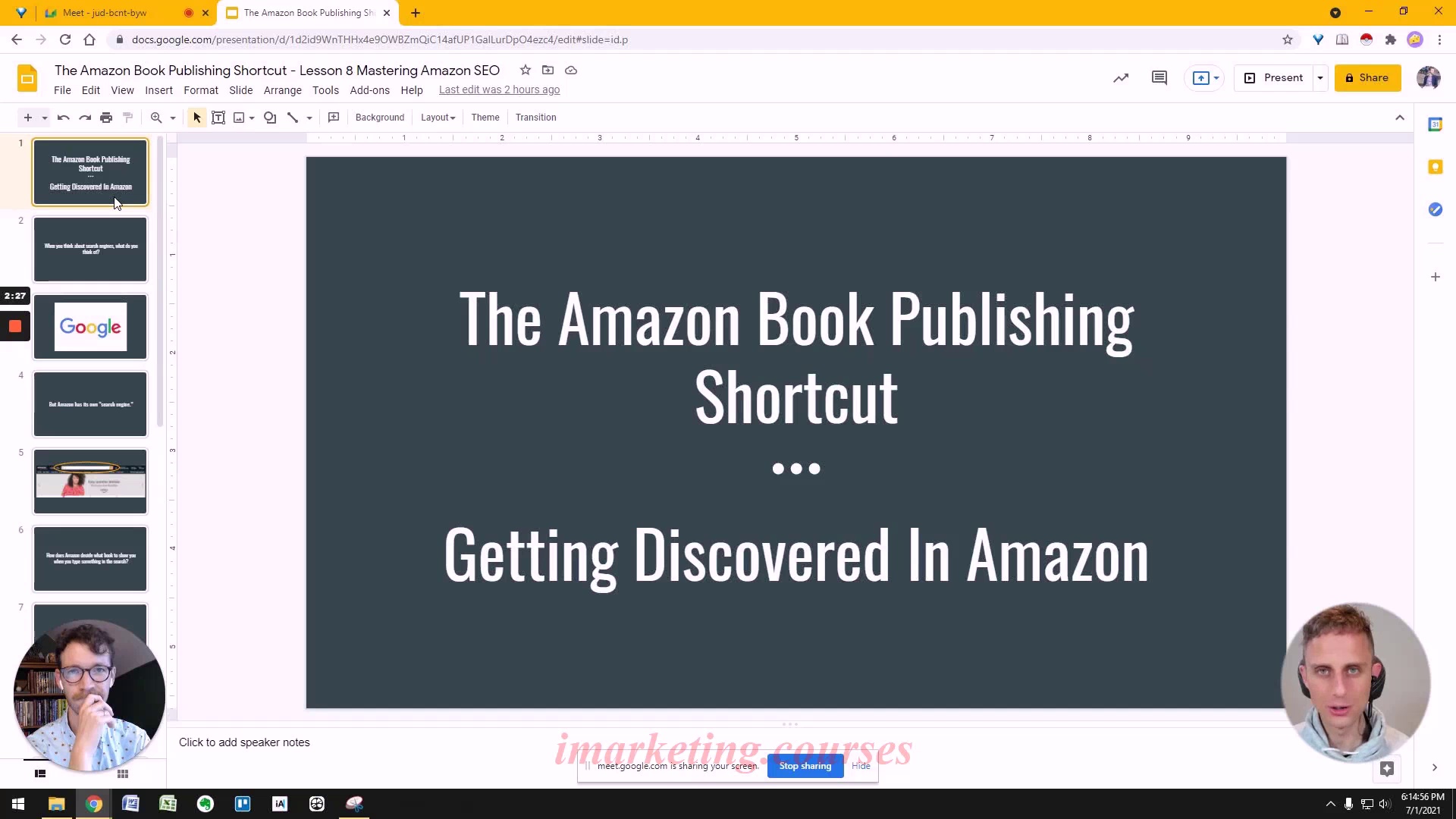
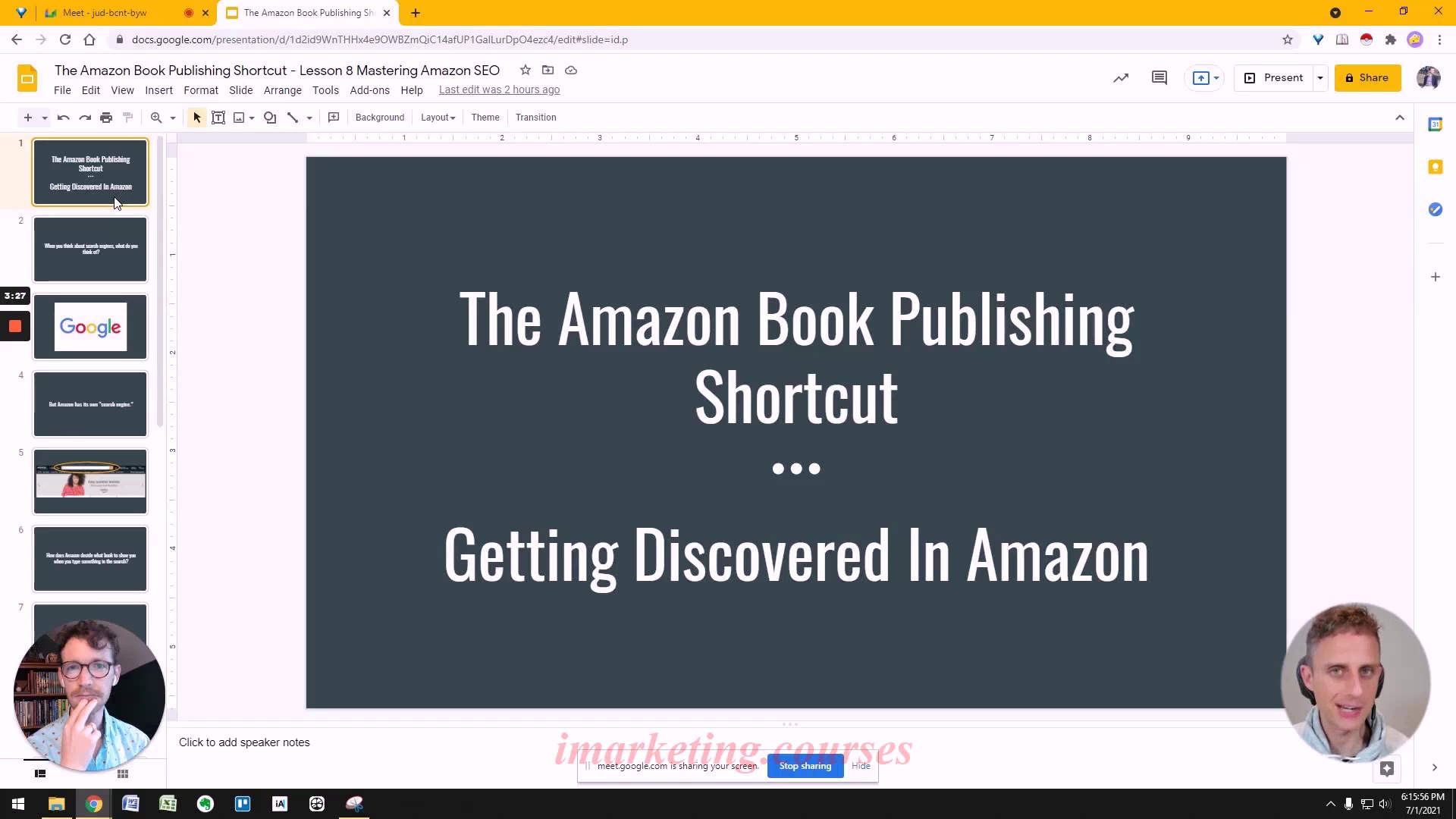
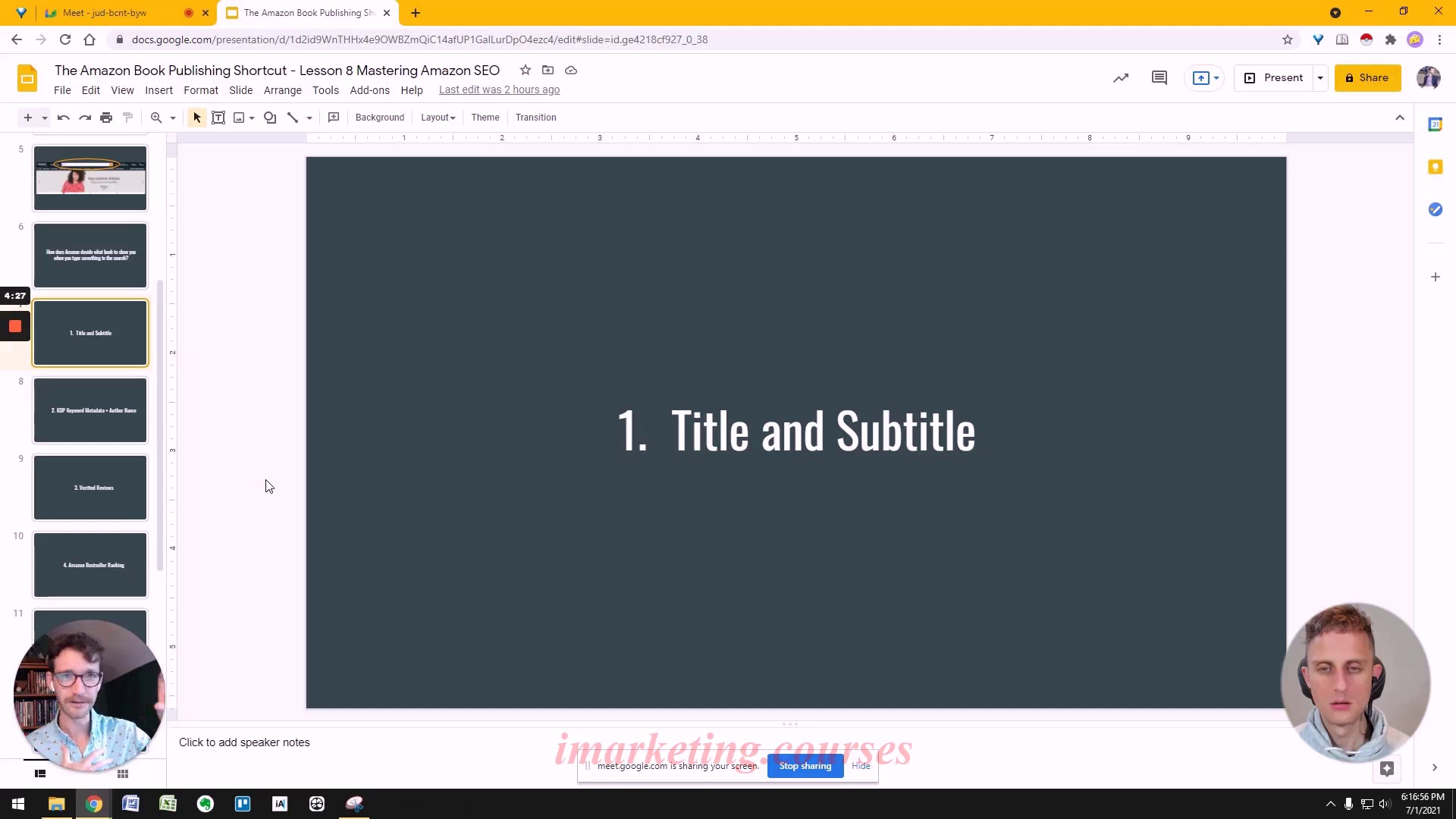
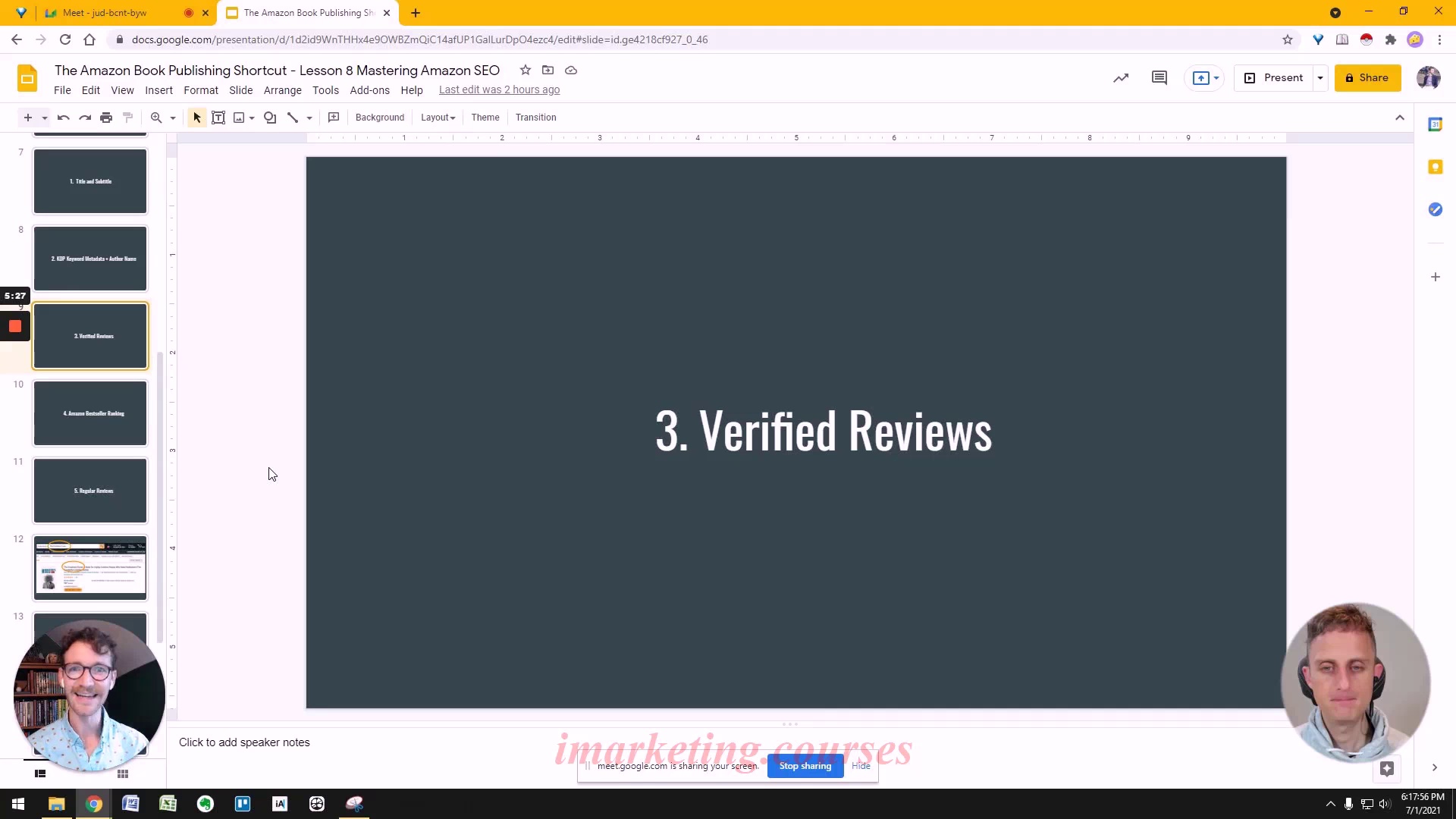
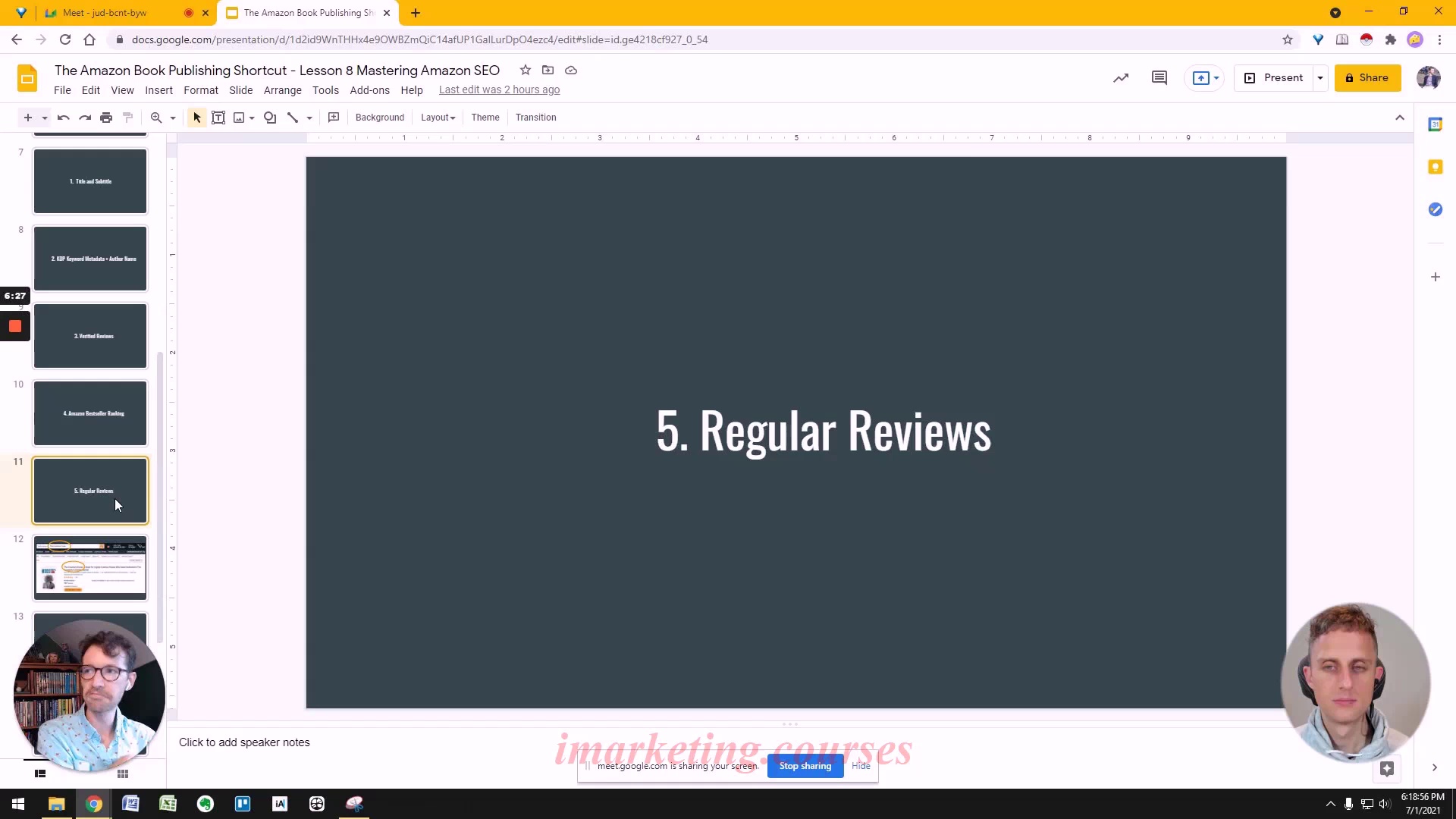
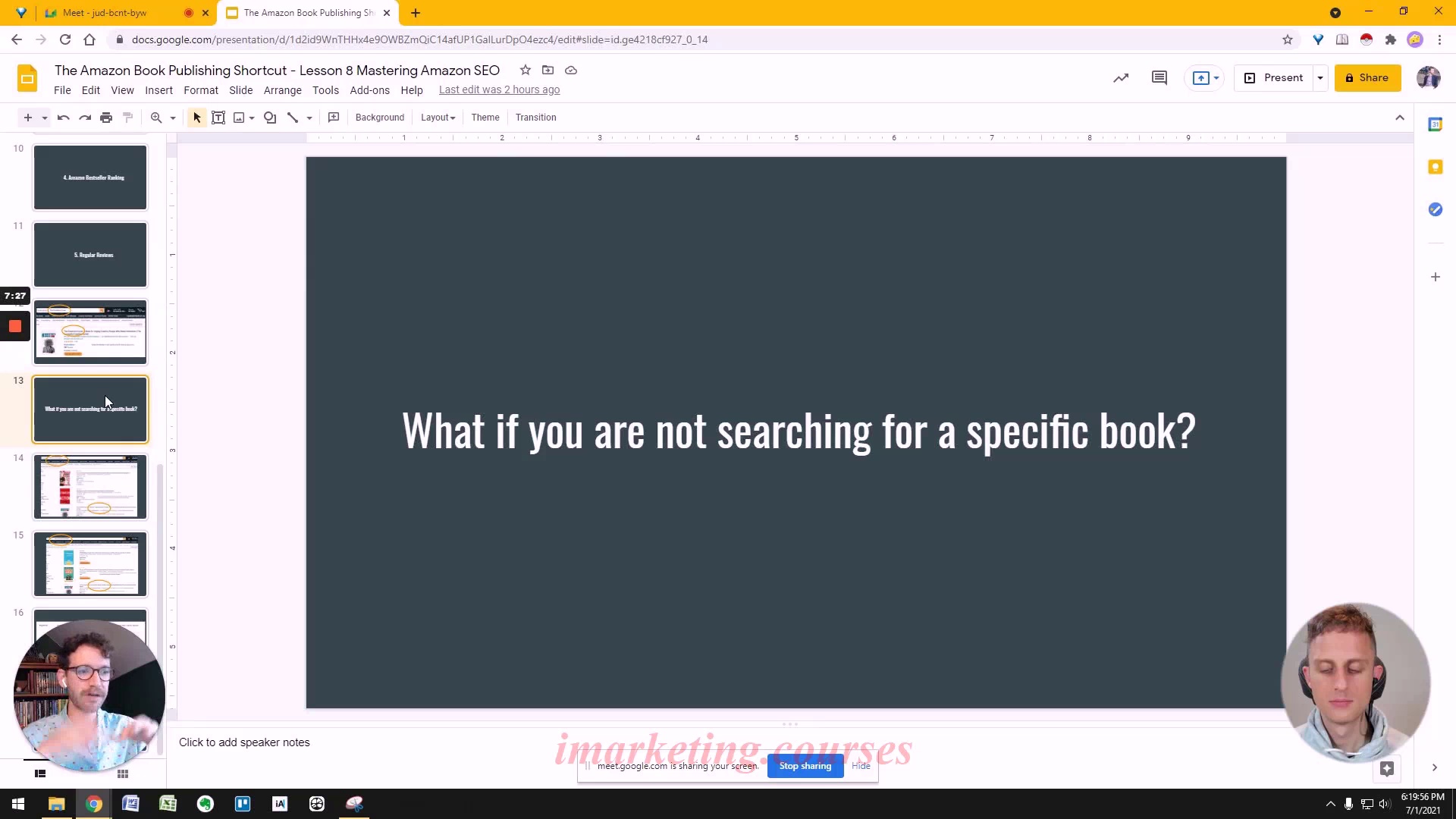
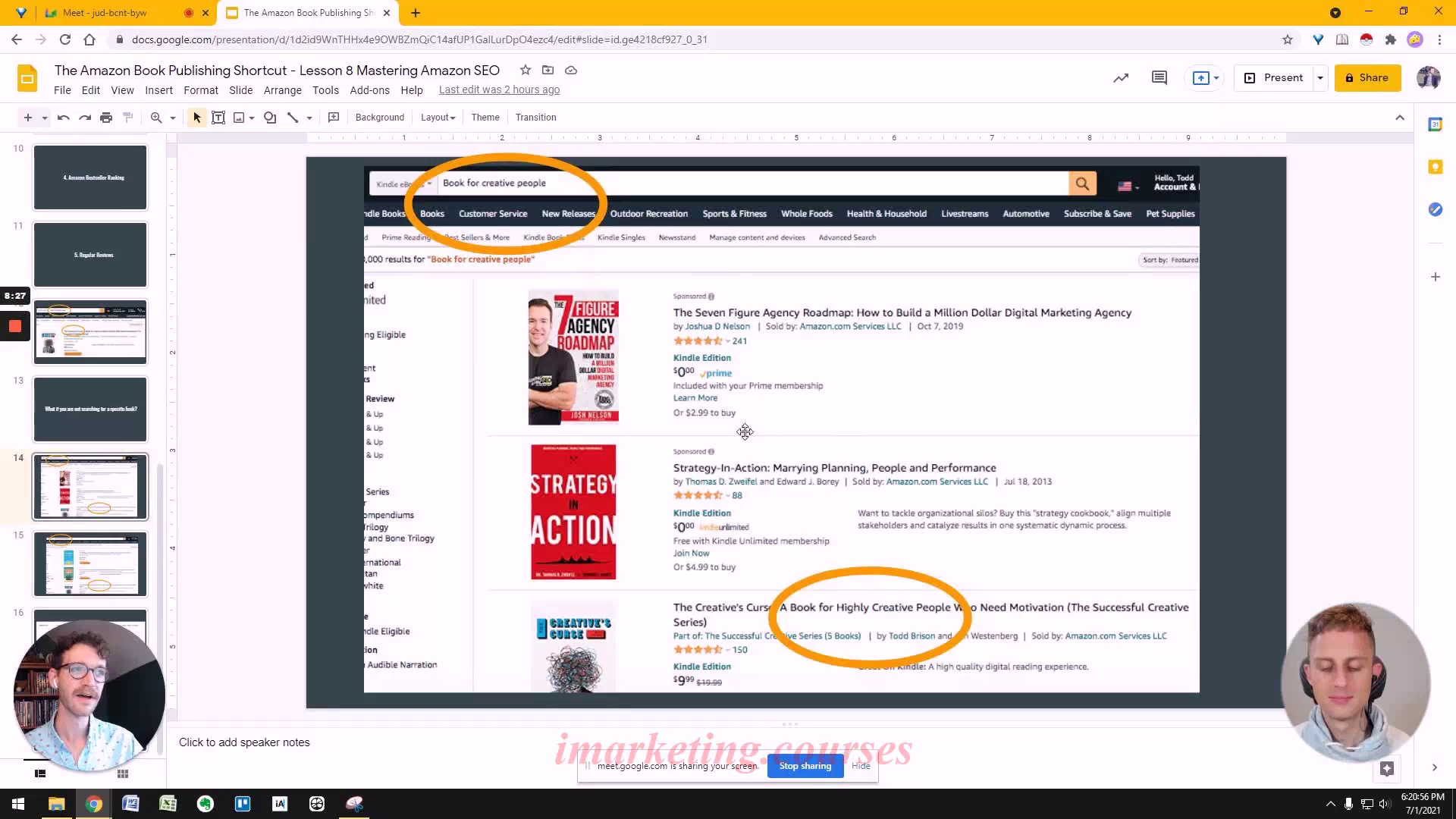
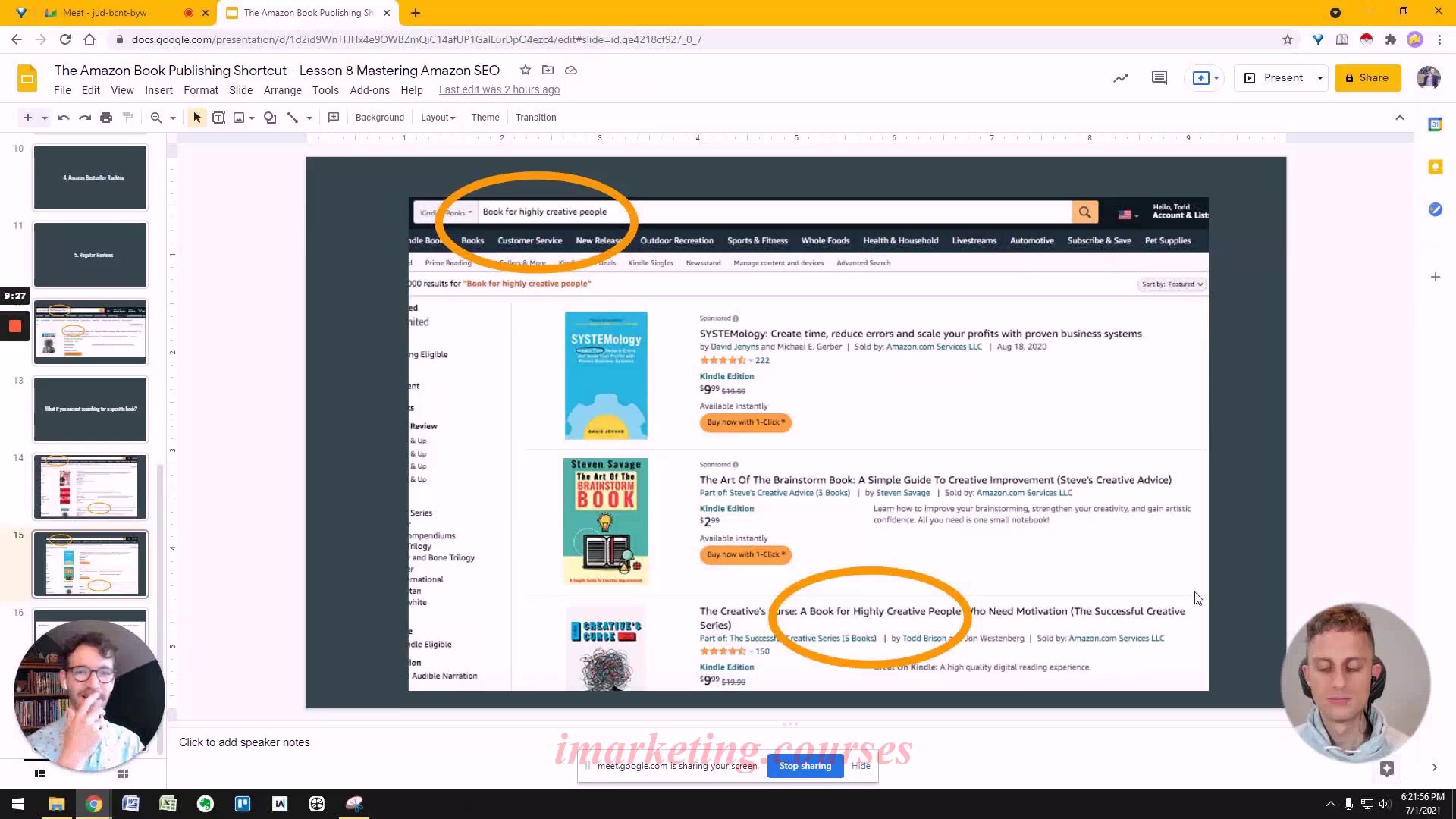
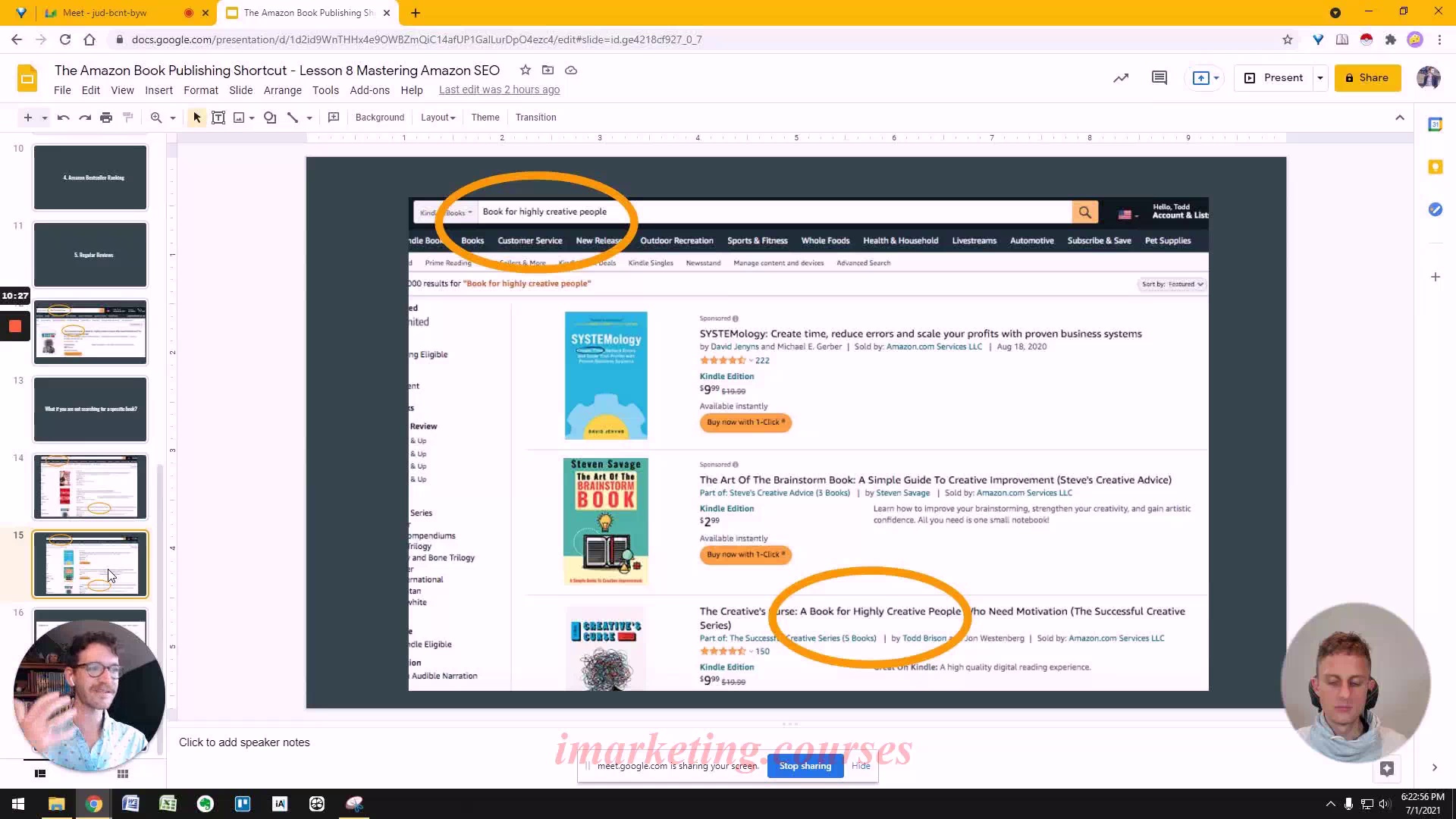
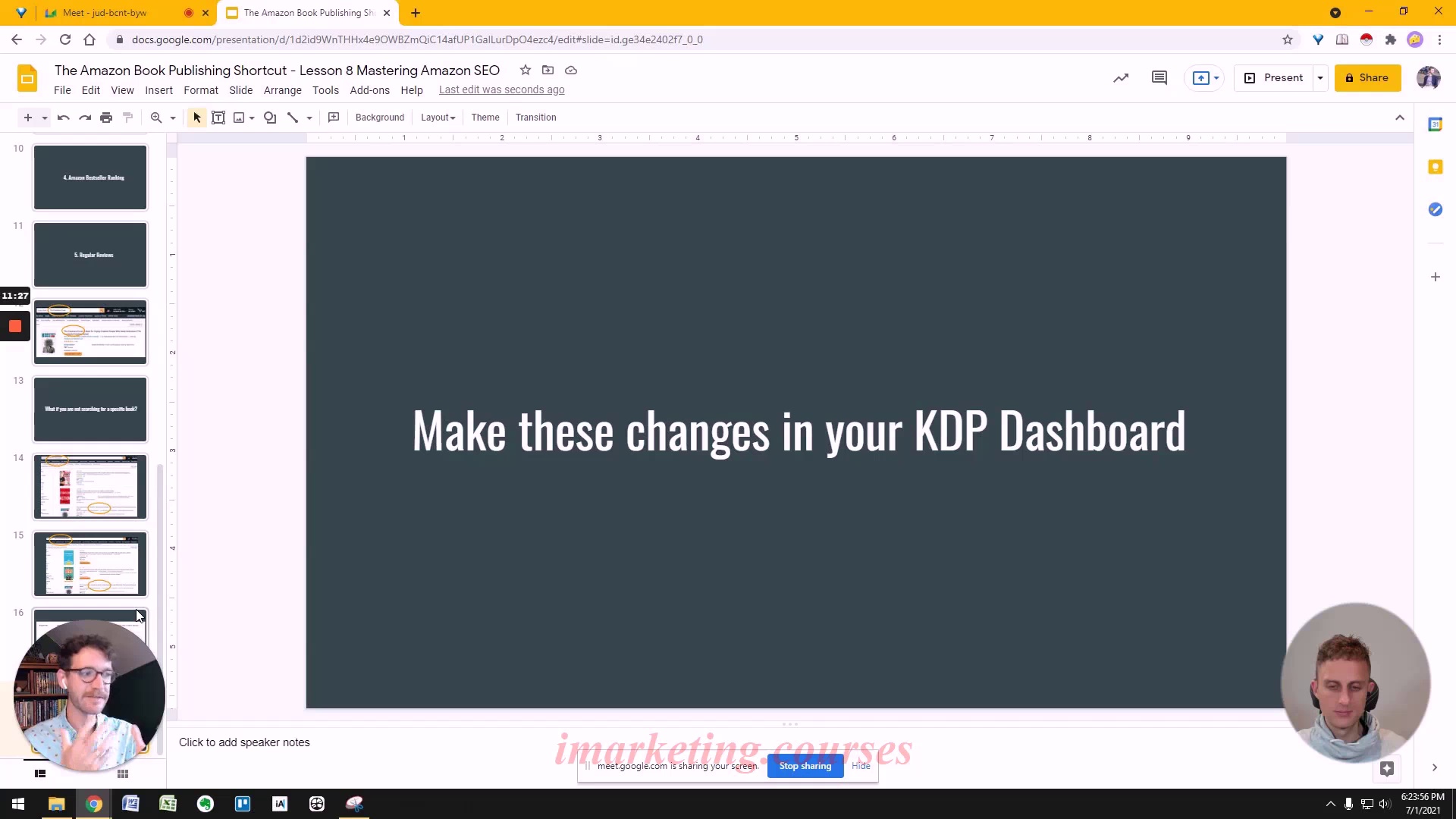
Amazon SEO is simpler than Google SEO. Understanding it allows authors to get their books discovered on Amazon for free before using ads.
The Amazon search engine decides what books to display based on: title/subtitle match, KDP keyword metadata, number of verified reviews, bestseller ranking, and regular reviews.
To optimize, research popular but less competitive keywords that describe what readers search for. Put those keywords in your KDP metadata and subtitle to directly match searches.
This allows appearing at the top for very specific searches without big competition. The narrator gave examples of optimizing his book to rank highly for "book for creative people" searches.
Proper optimization means setting up your KDP "metadata" - the information fields describing your book - to match popular and very specific searches readers do.
.Tim-D-AmazonBookPubl 8.1 to 9.3 - Part 2













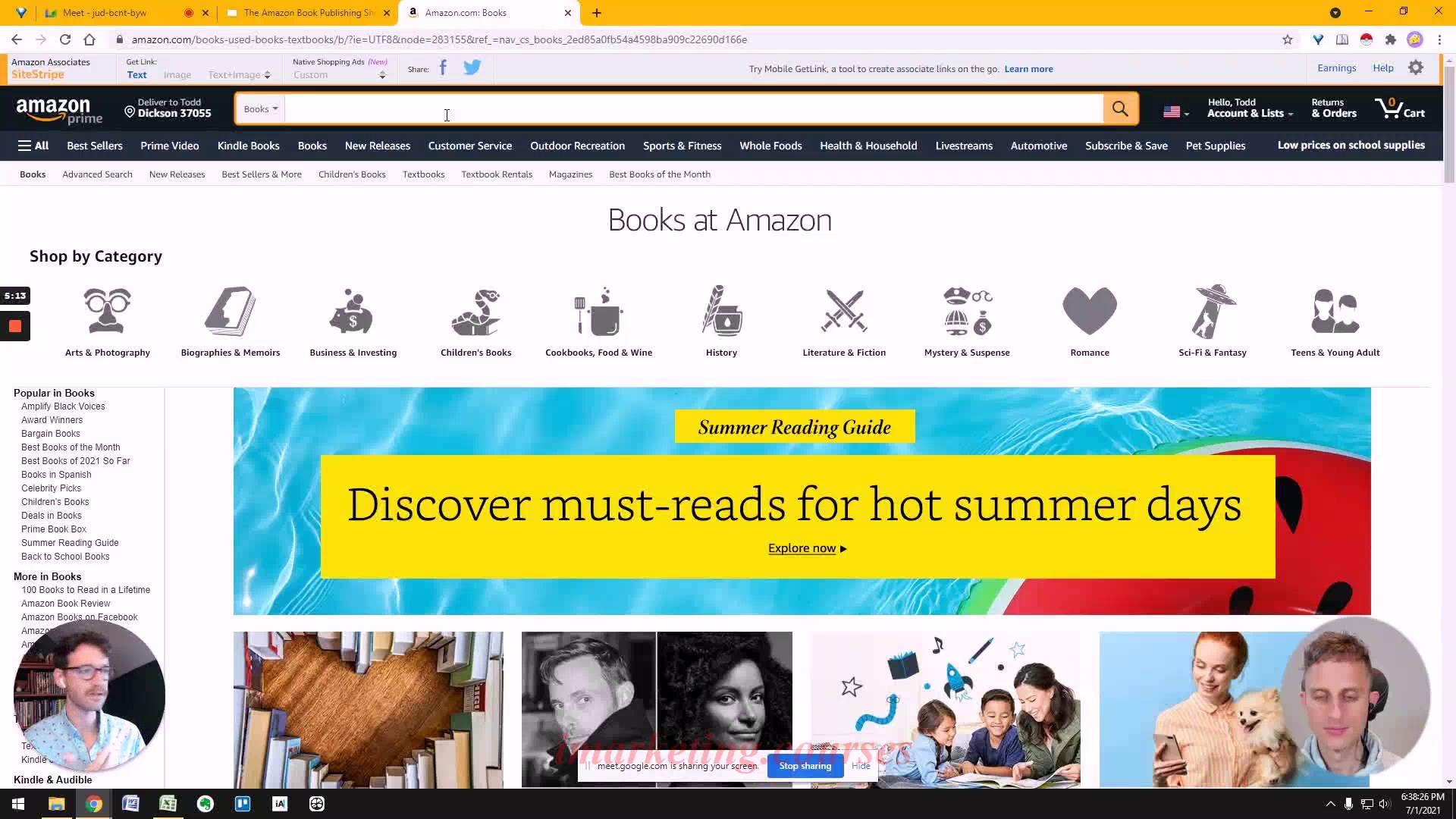
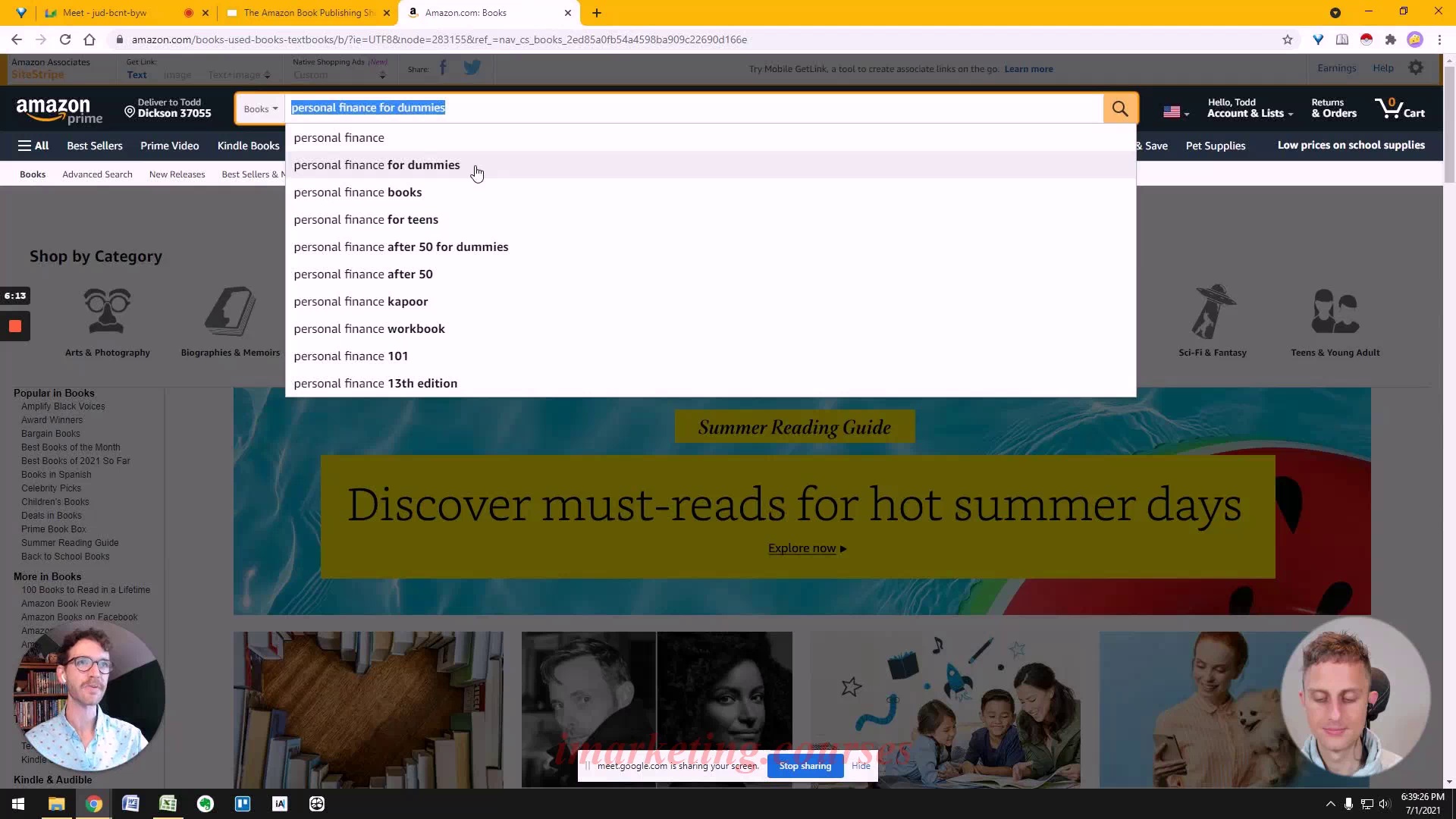
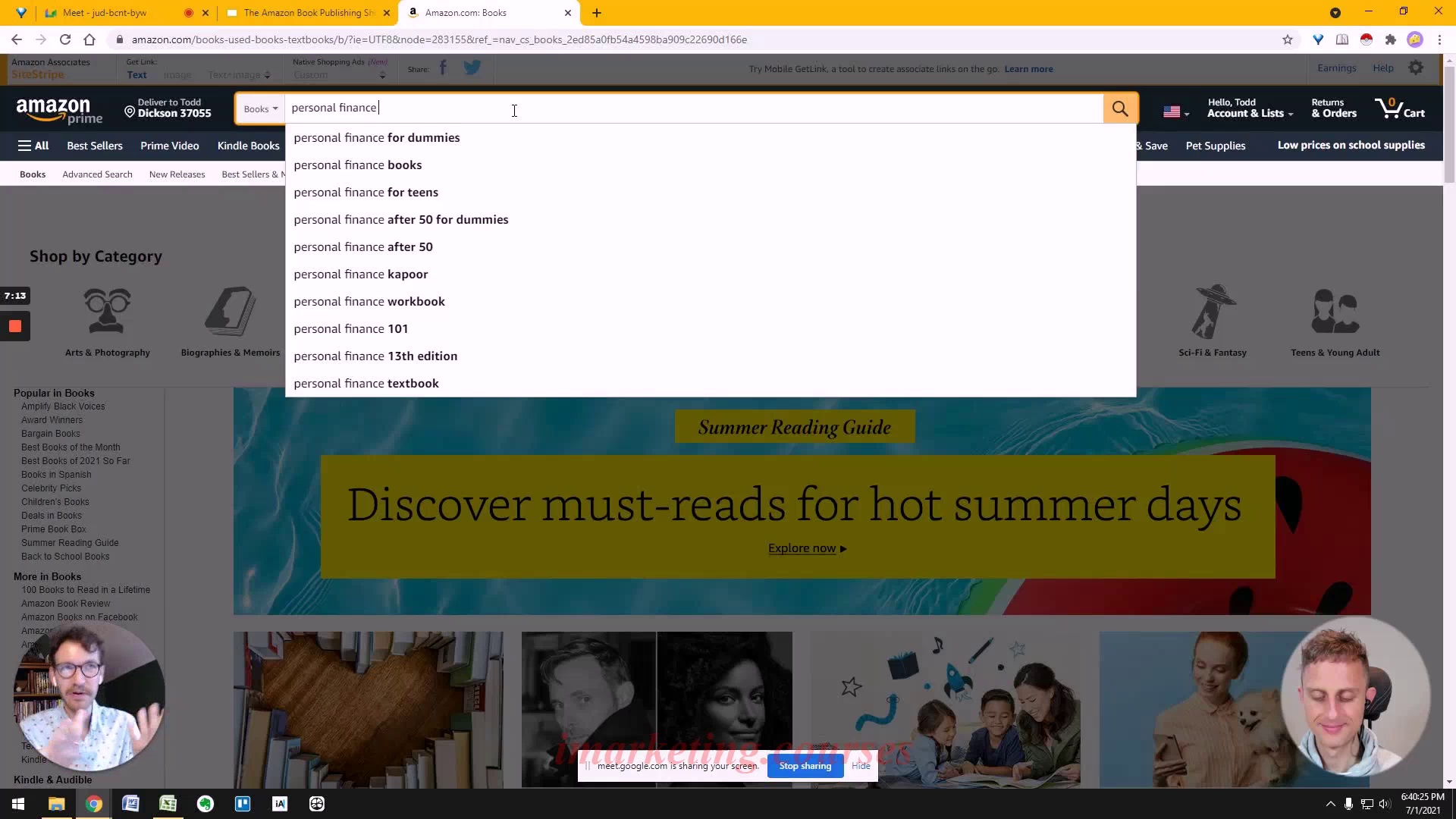
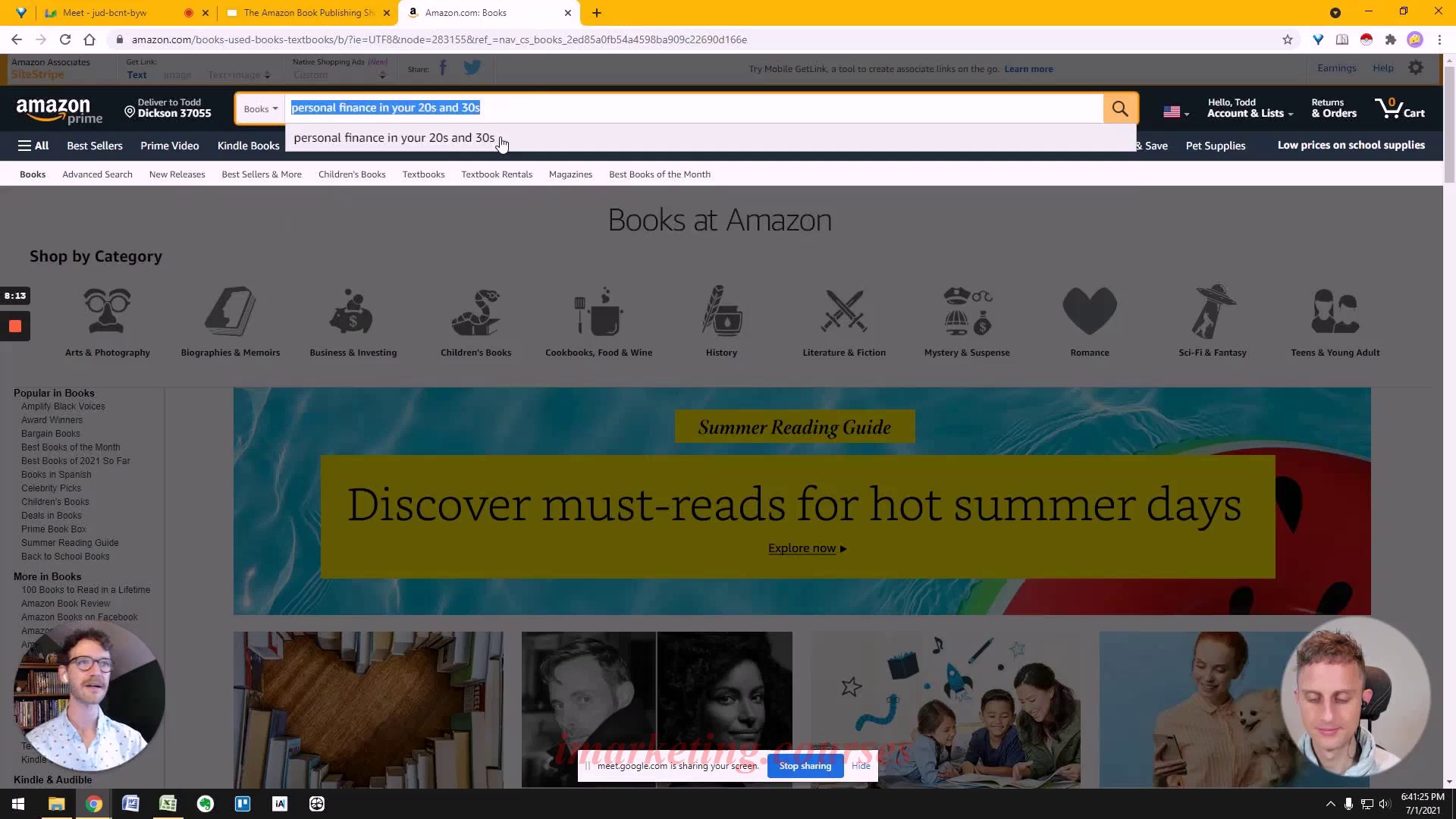
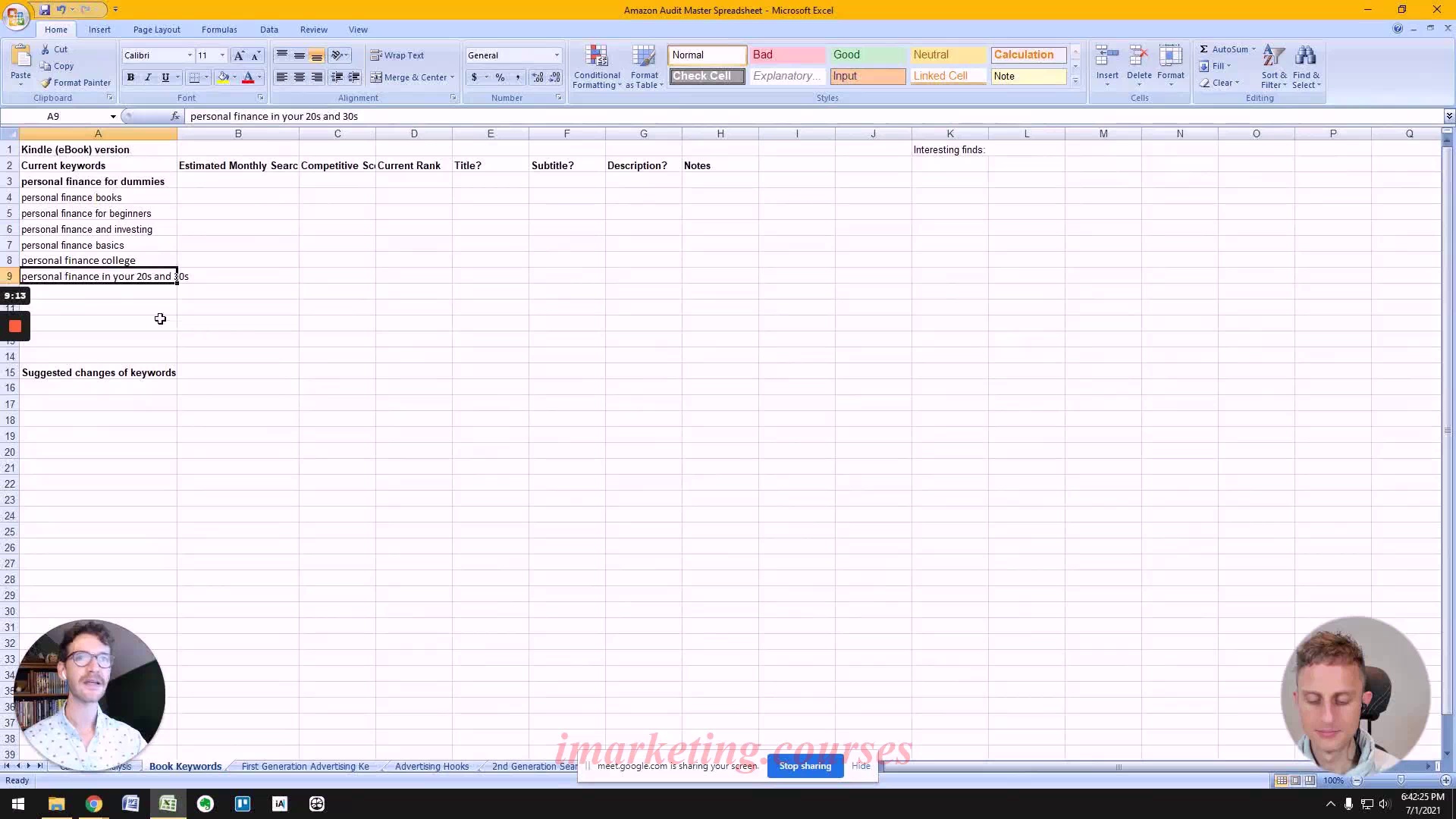
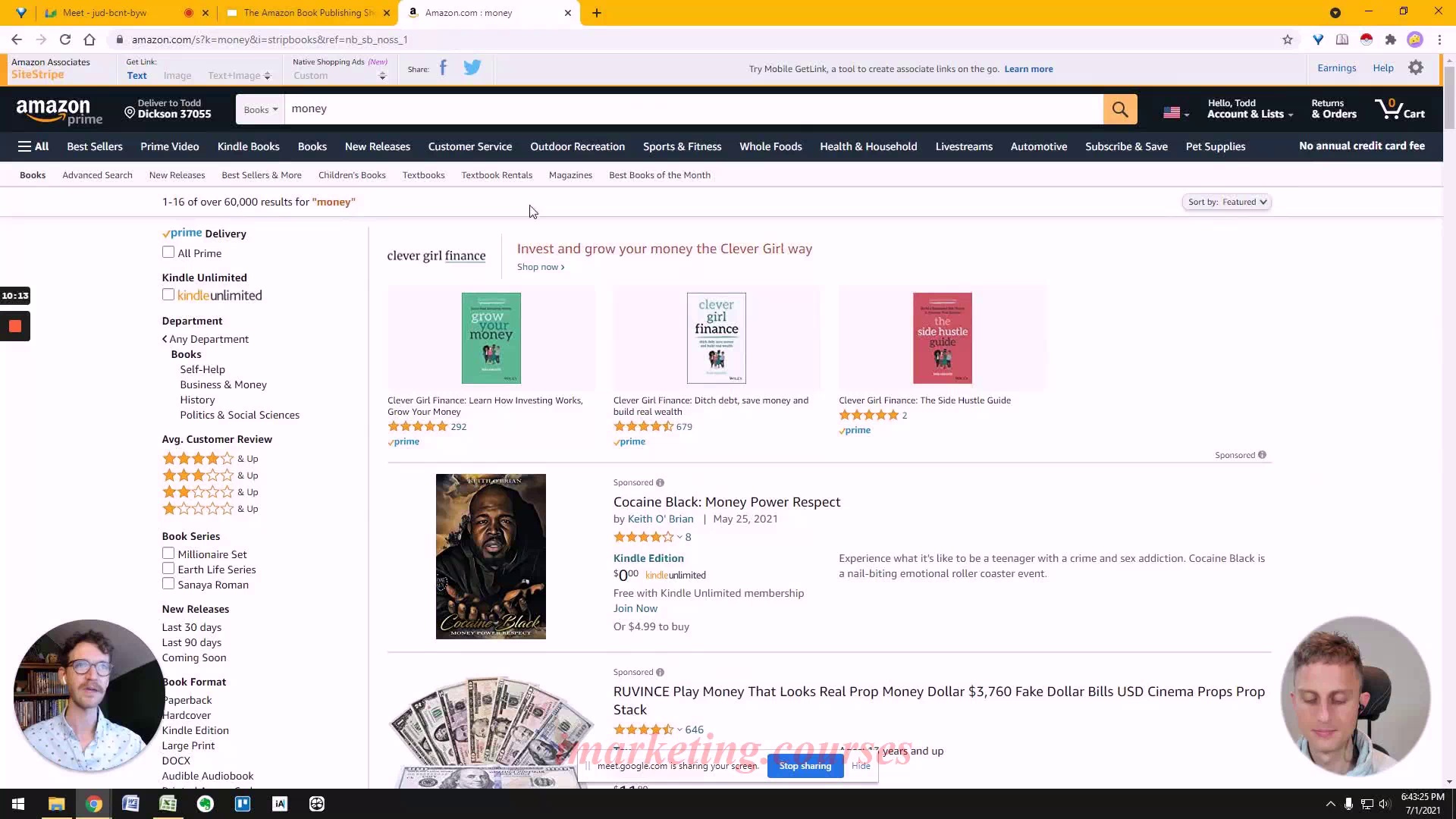
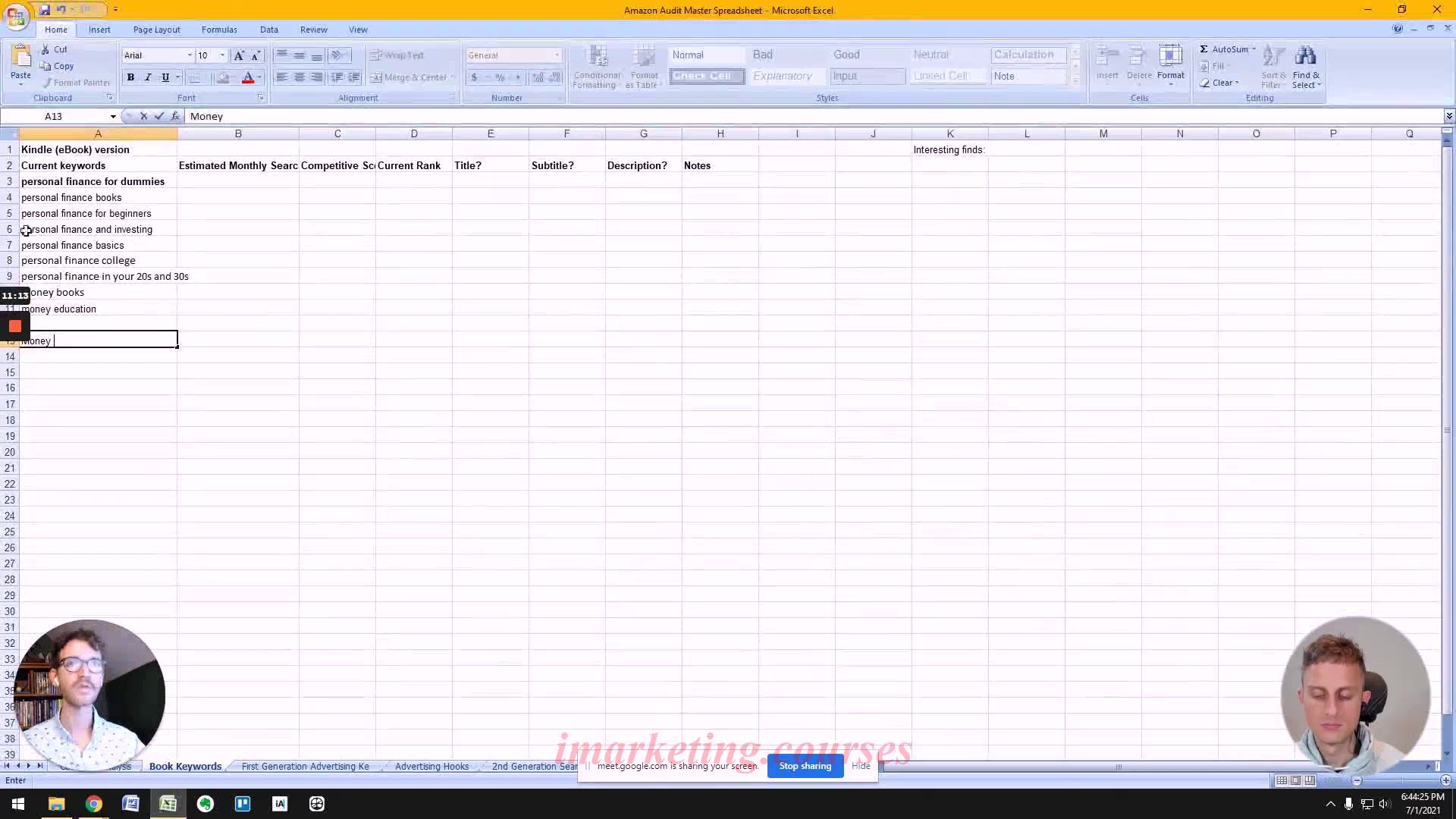
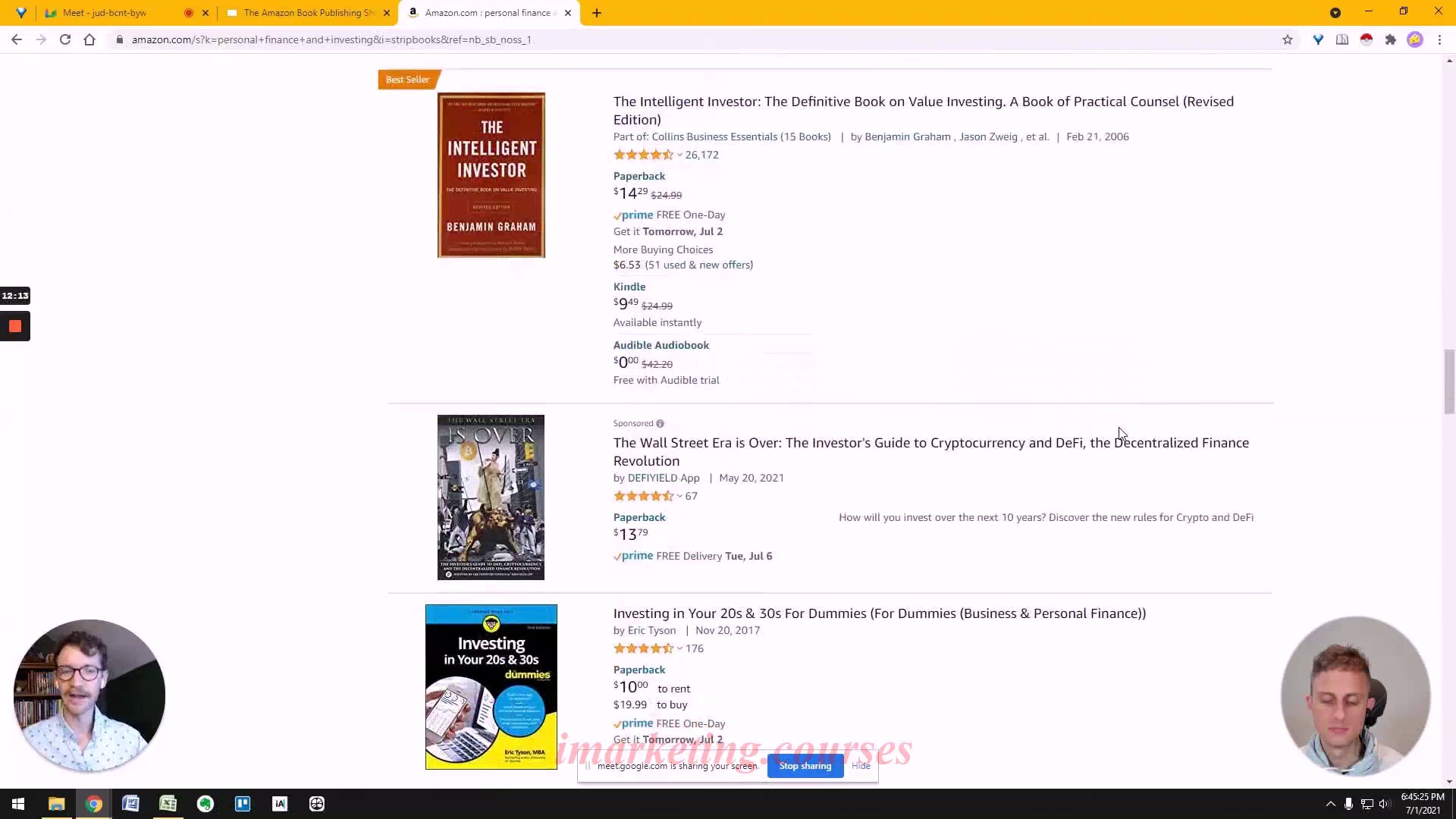
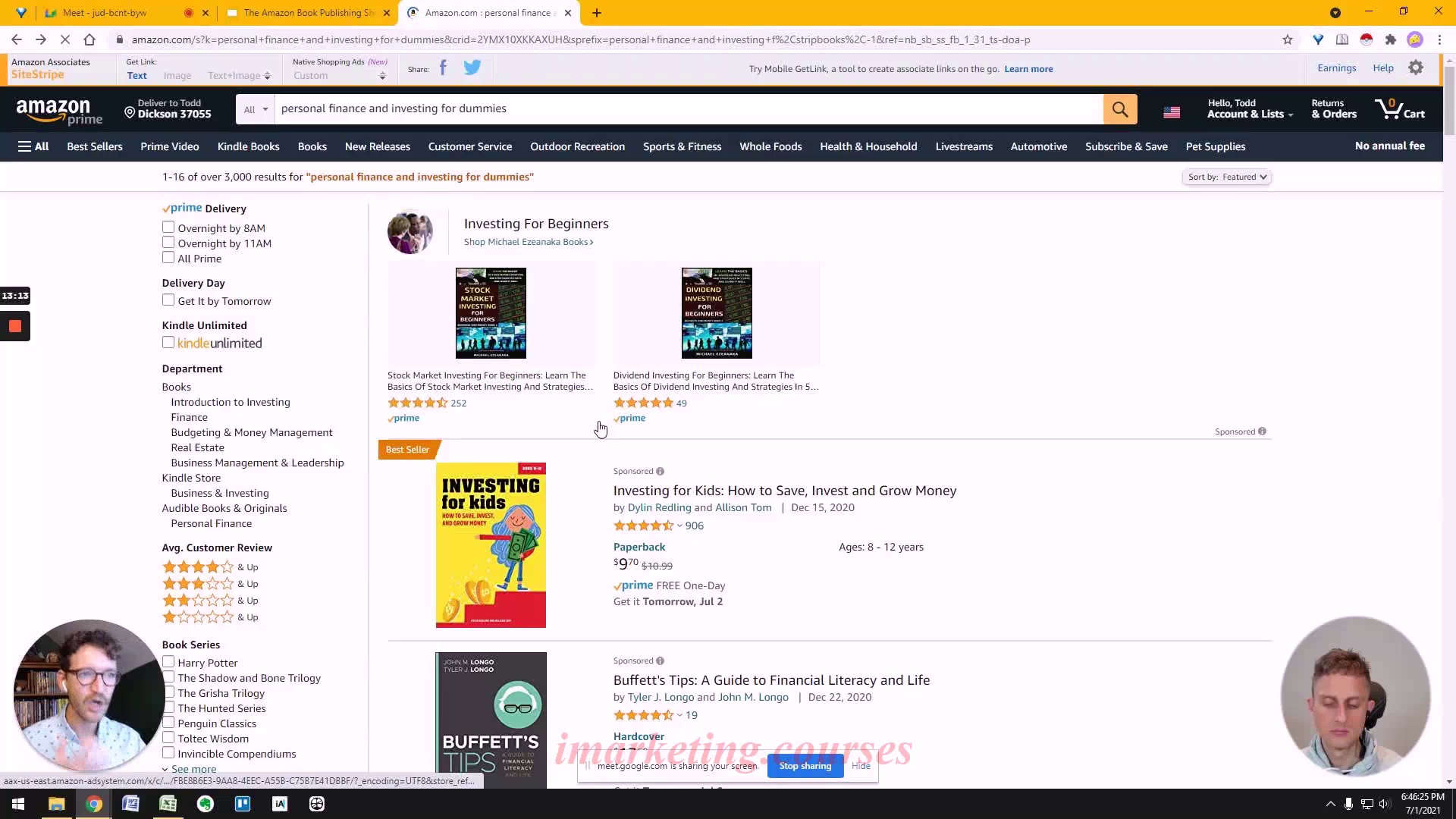
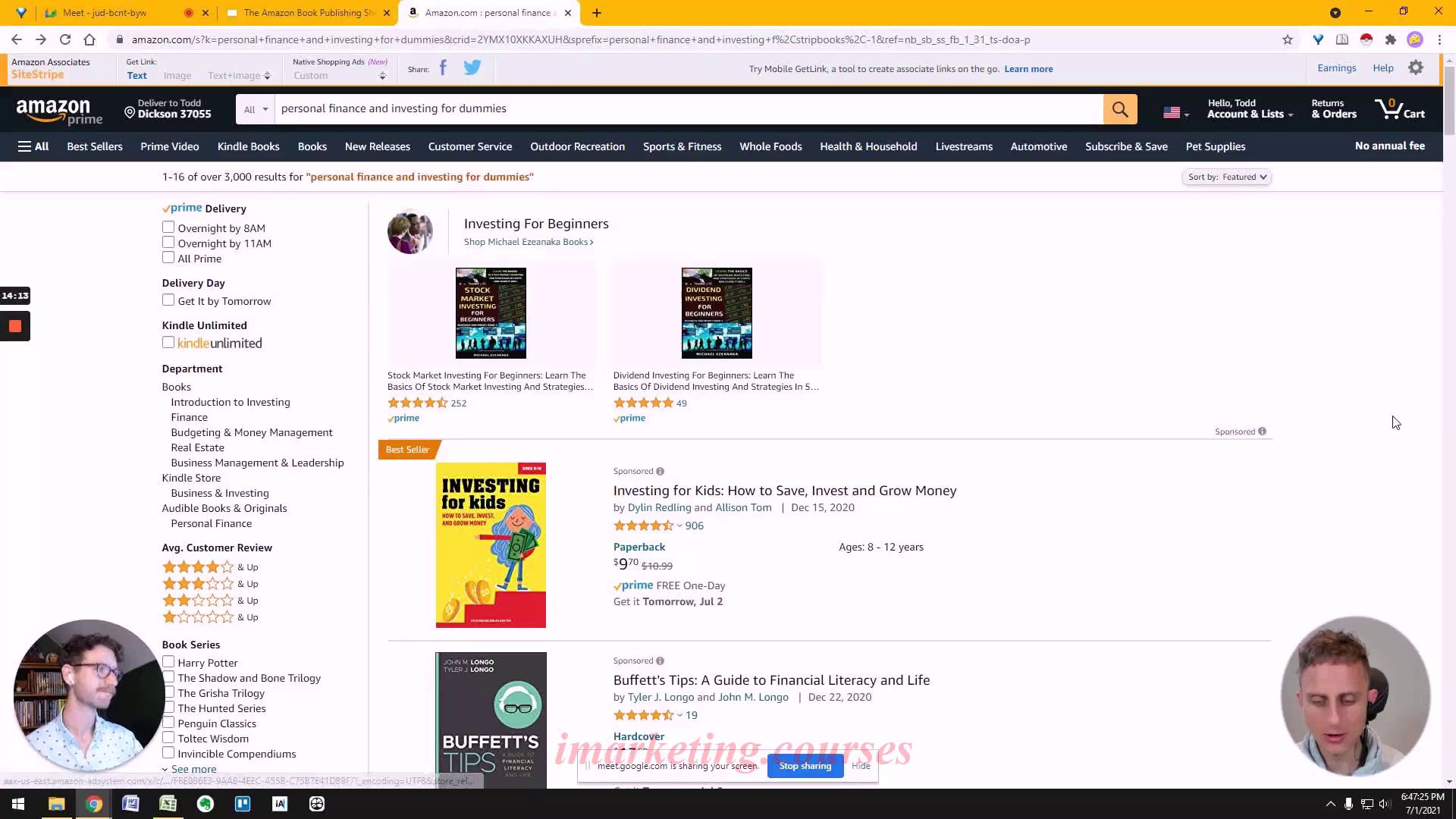
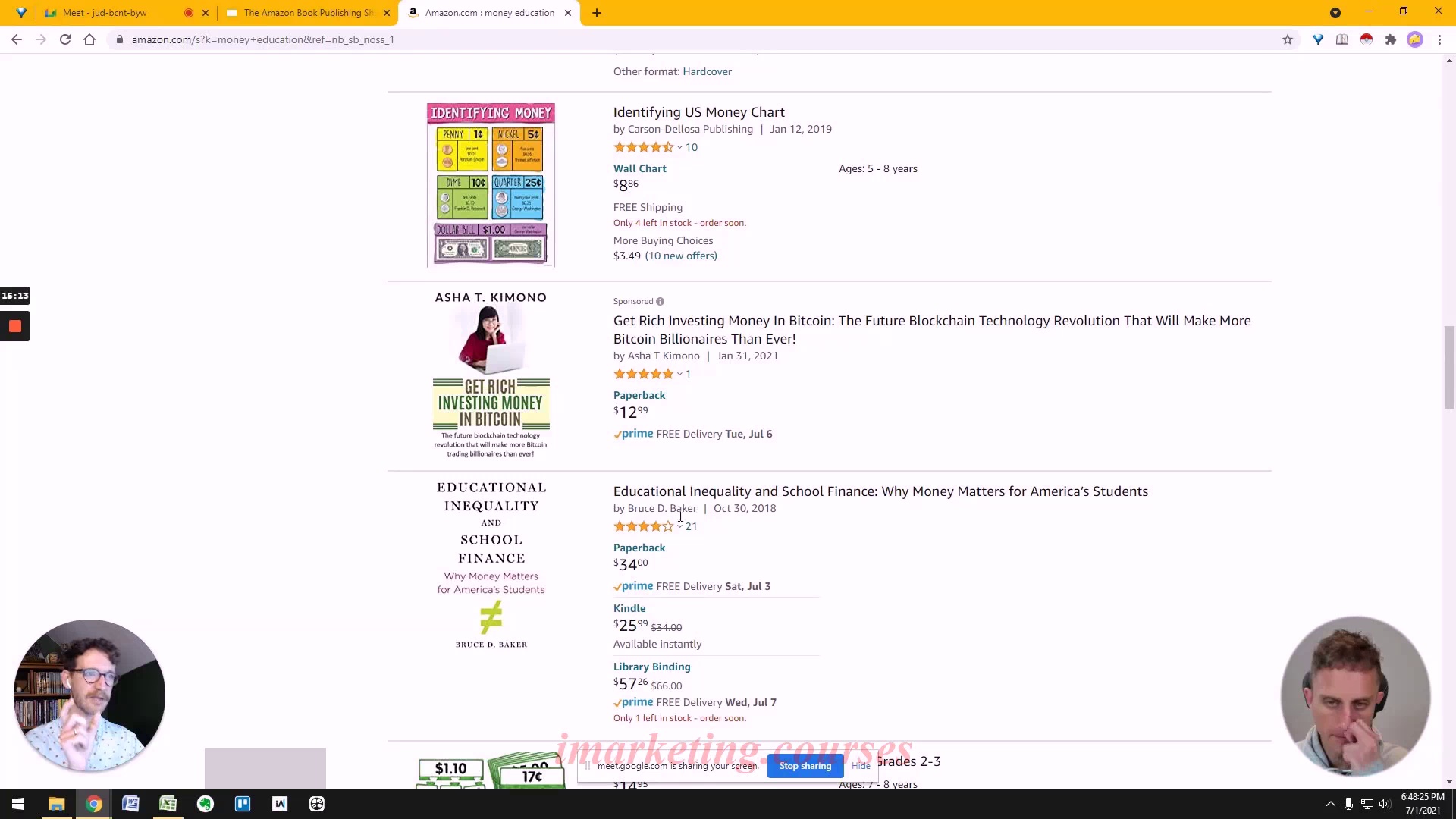
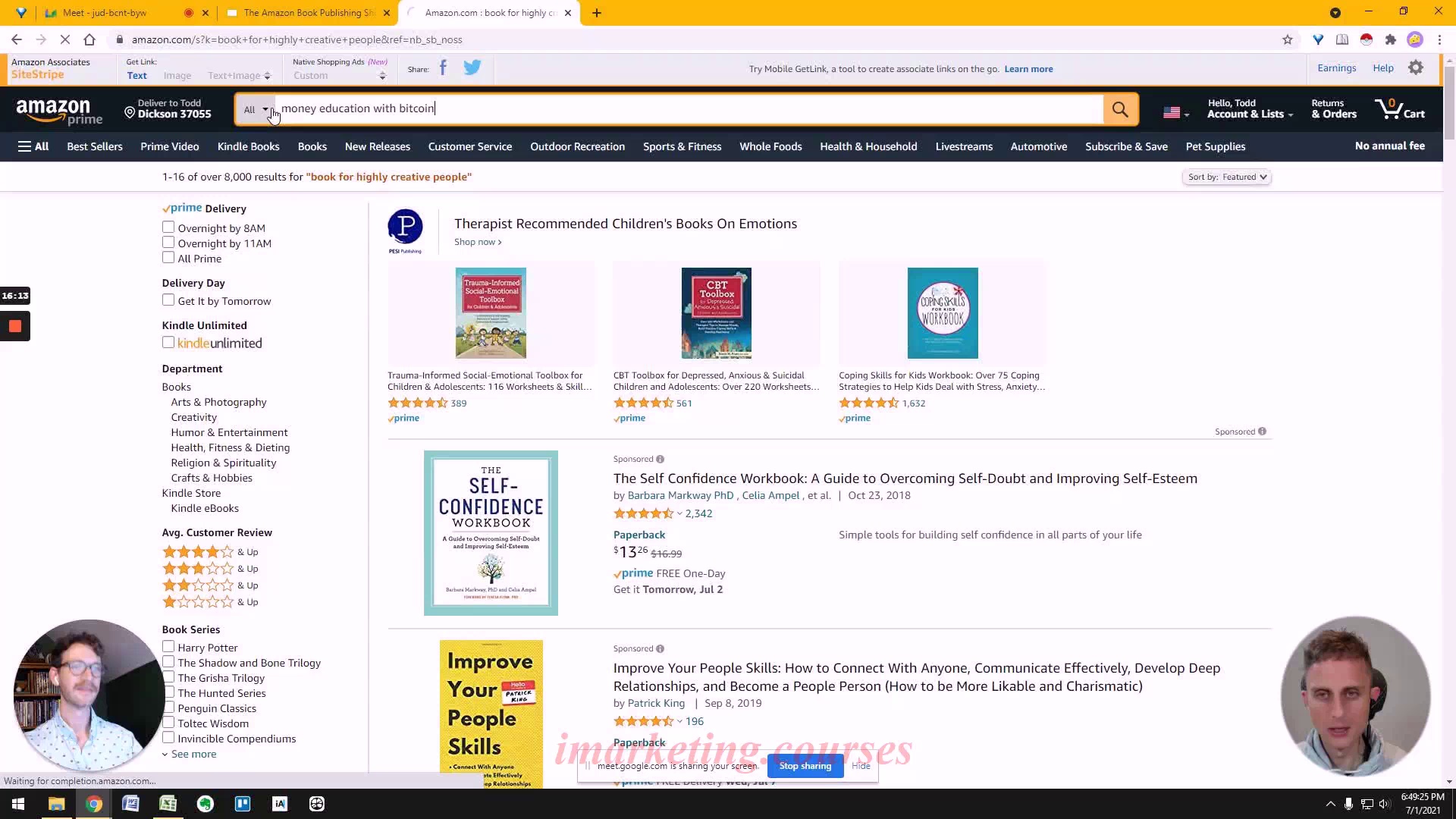
Amazon doesn't provide many tools to see what book keywords people search for. The narrator demonstrates two techniques to uncover this data:
1. Use Amazon's search bar autofill suggestions when typing in a genre or topic. These terms show what people are searching for. Copy potential keywords like personal finance for dummies into a spreadsheet.
2. Use the "Amazon ABC trick" to methodically go through the letters of the alphabet after genre terms like personal finance A to surface more niche long-tail keywords. This reveals less competitive keywords.
The narrator searches for money education and finds books with fewer reviews and less dominant branding. Targeting precise keywords can help beat out more popular money books. Putting exact search keywords in your book's title or subtitle also helps with Amazon rankings.
.Tim-D-AmazonBookPubl 8.1 to 9.3 - Part 3


























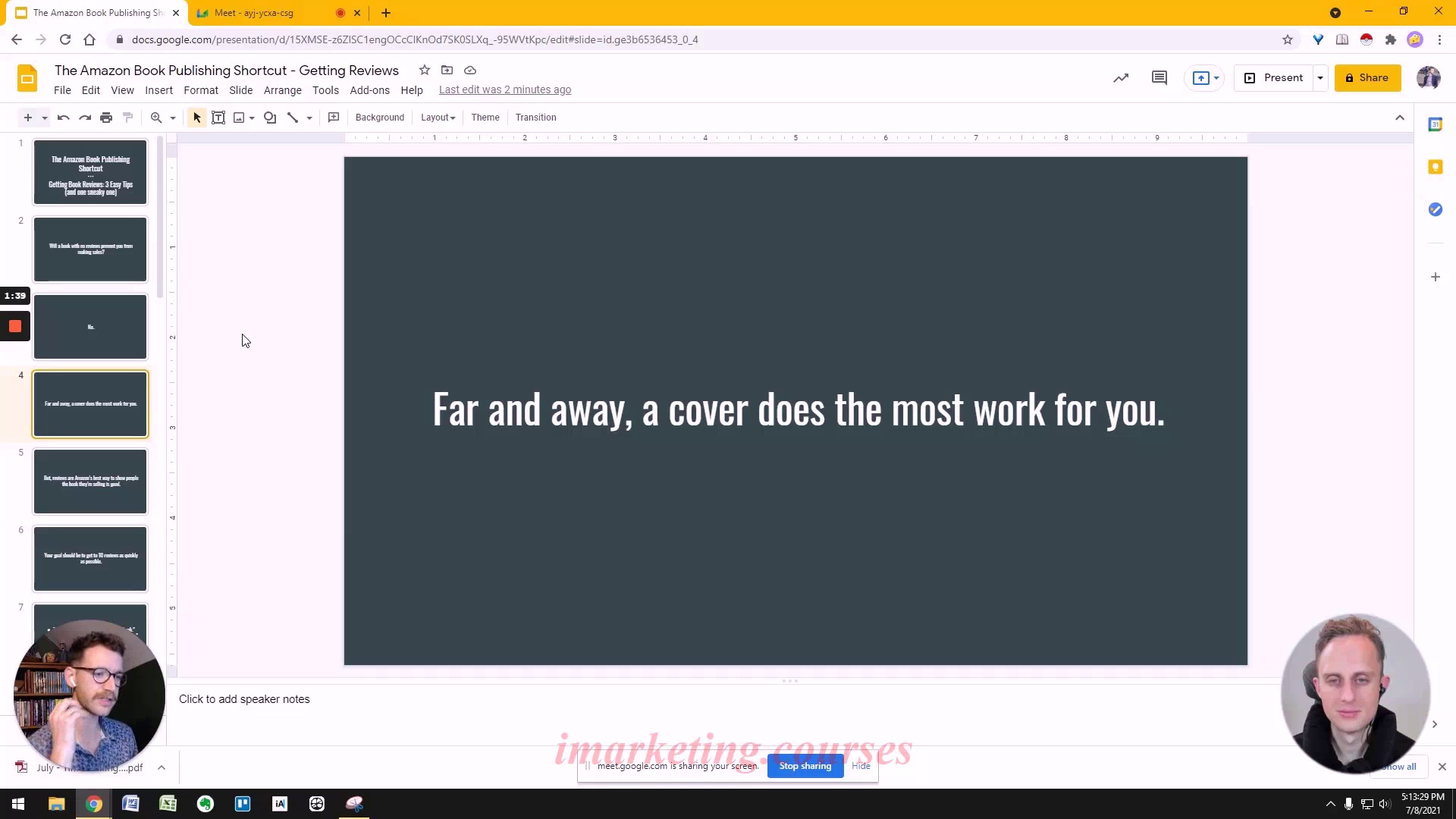
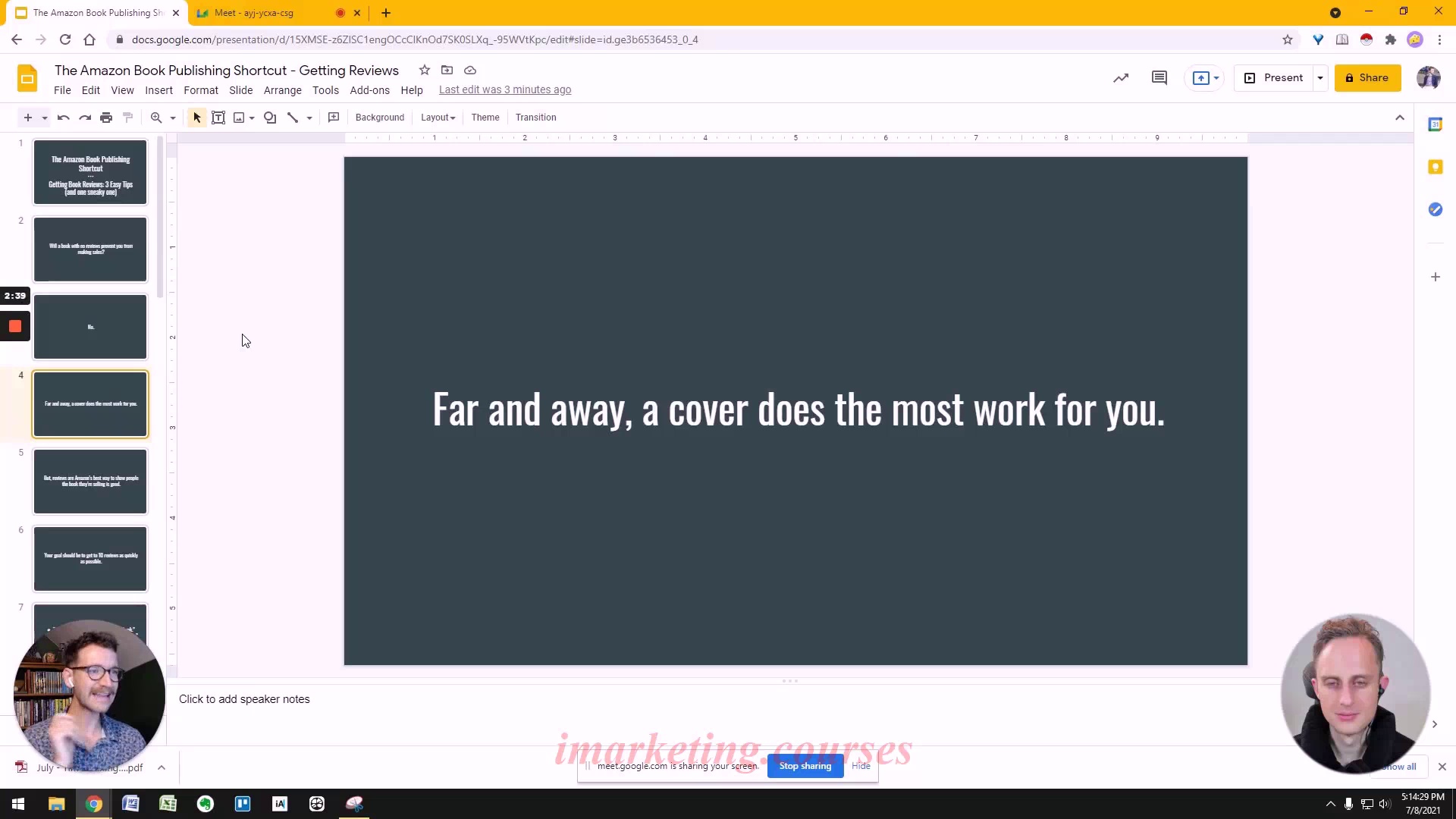
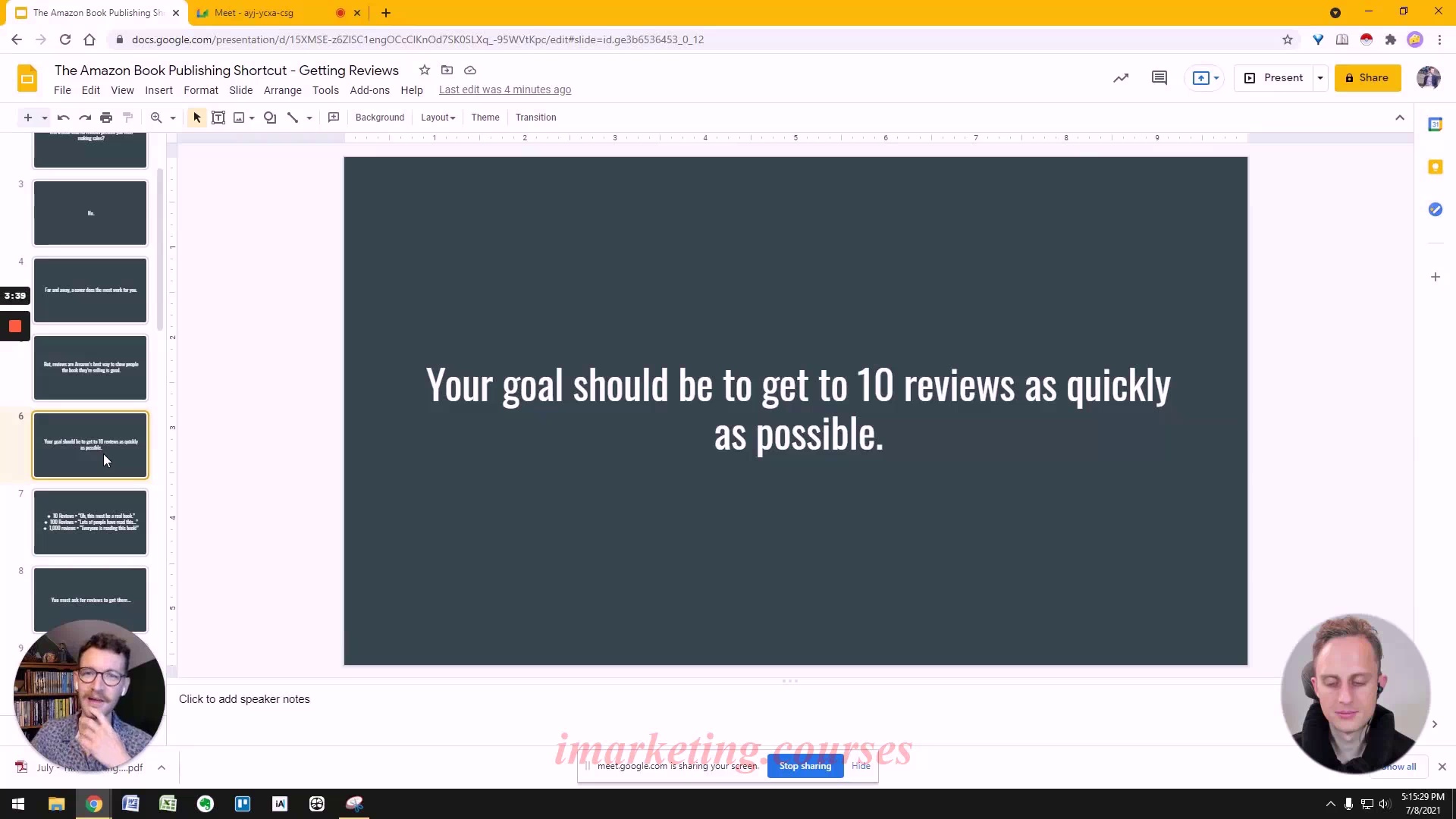
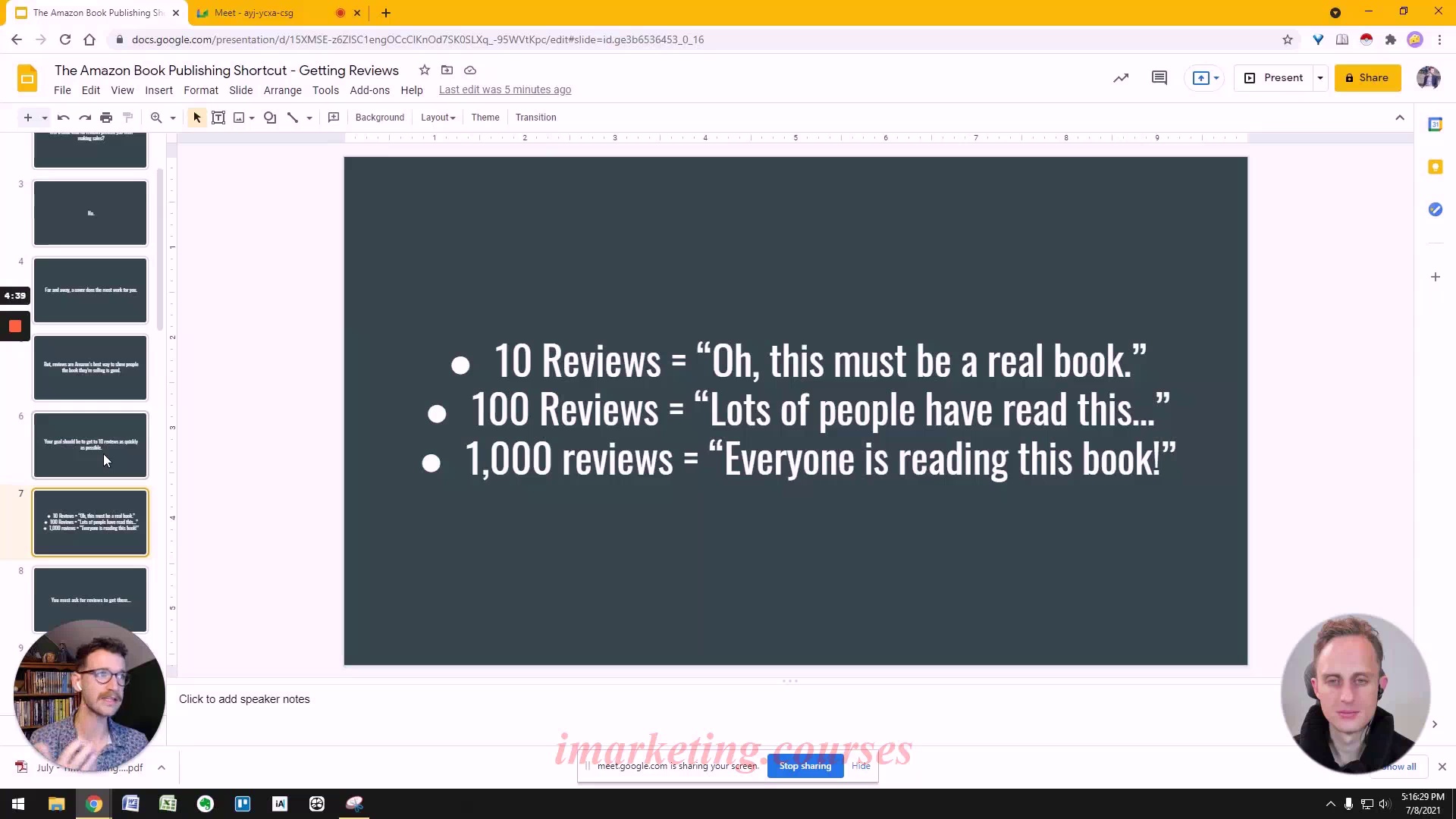
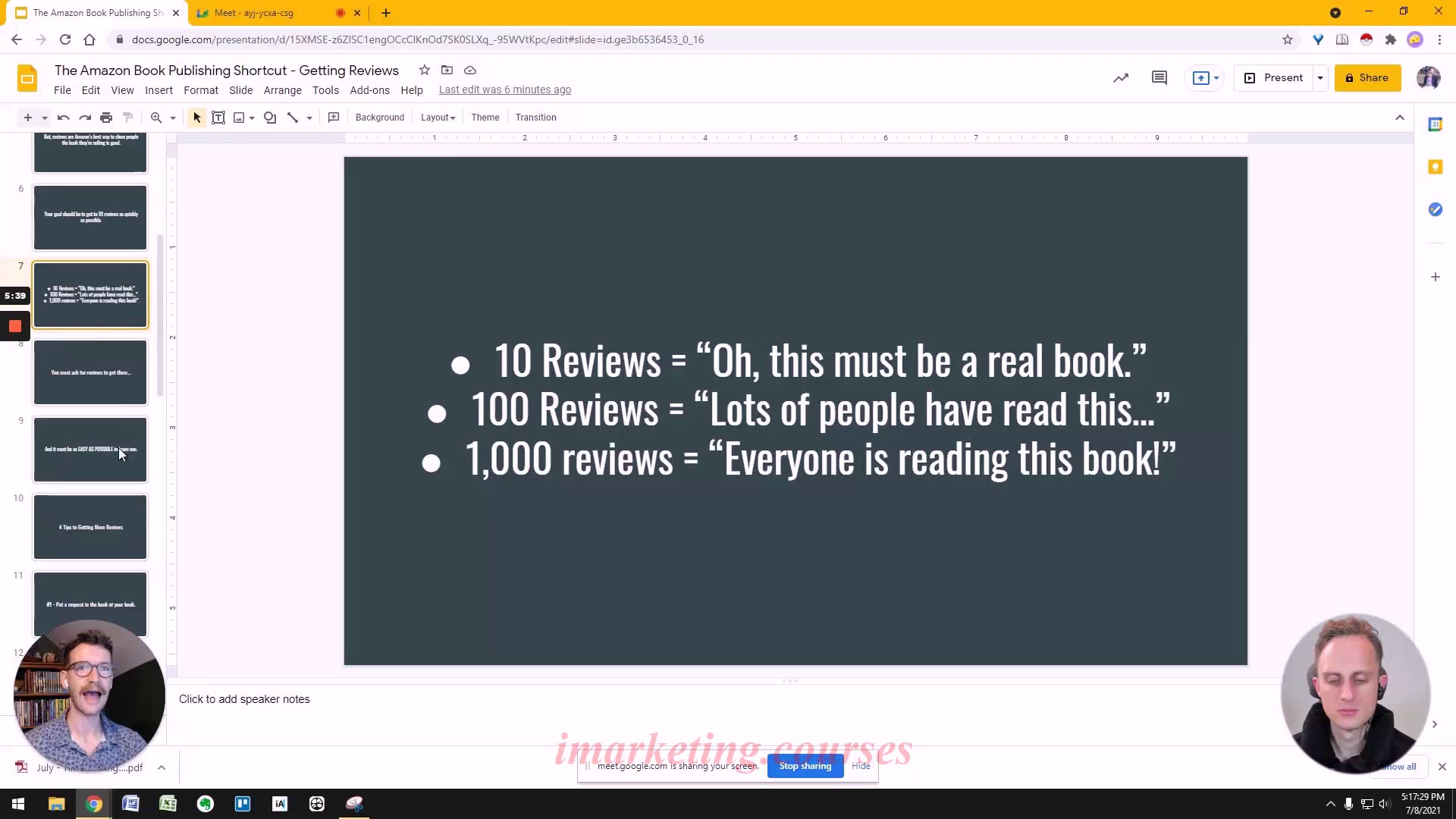
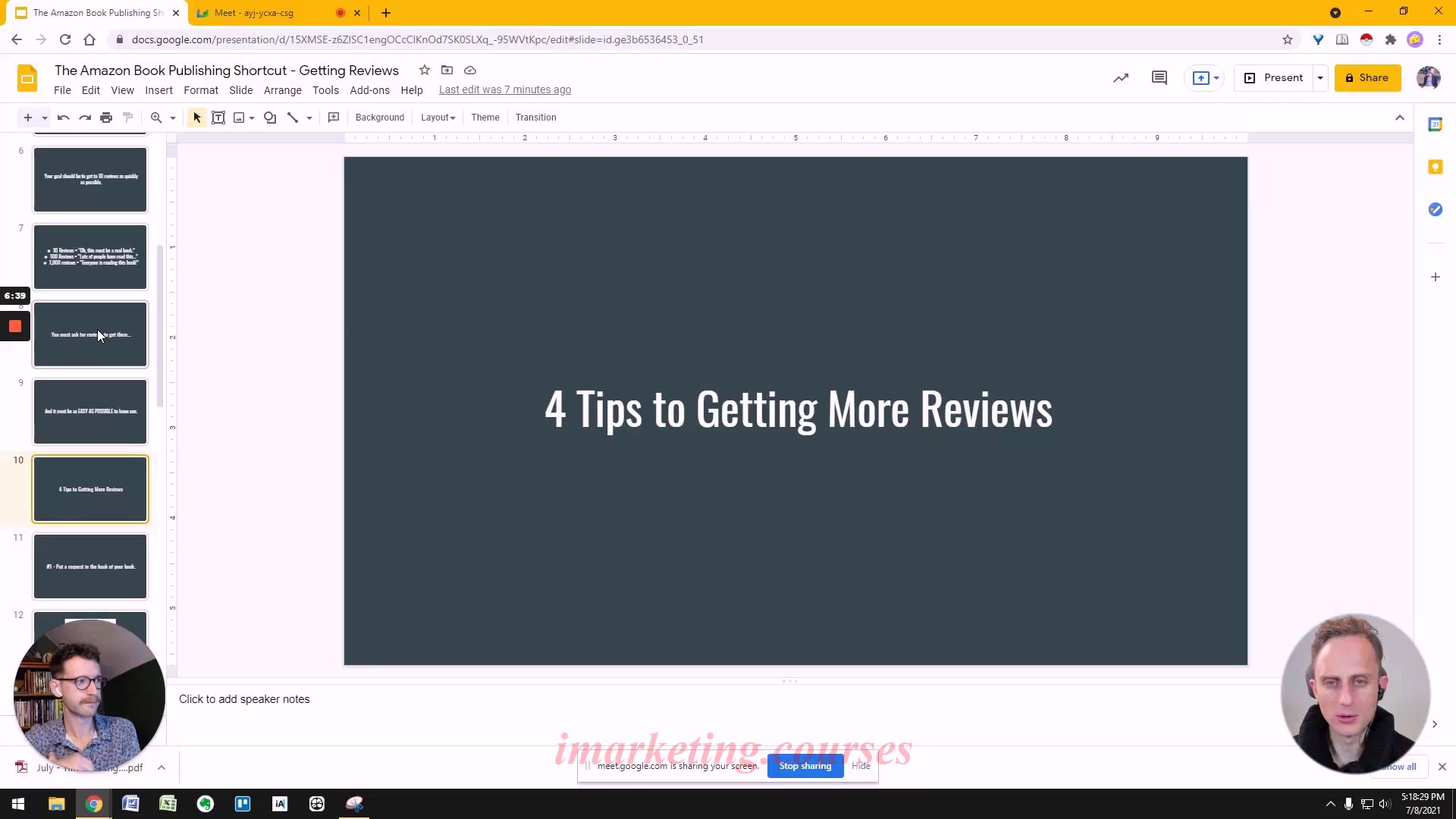
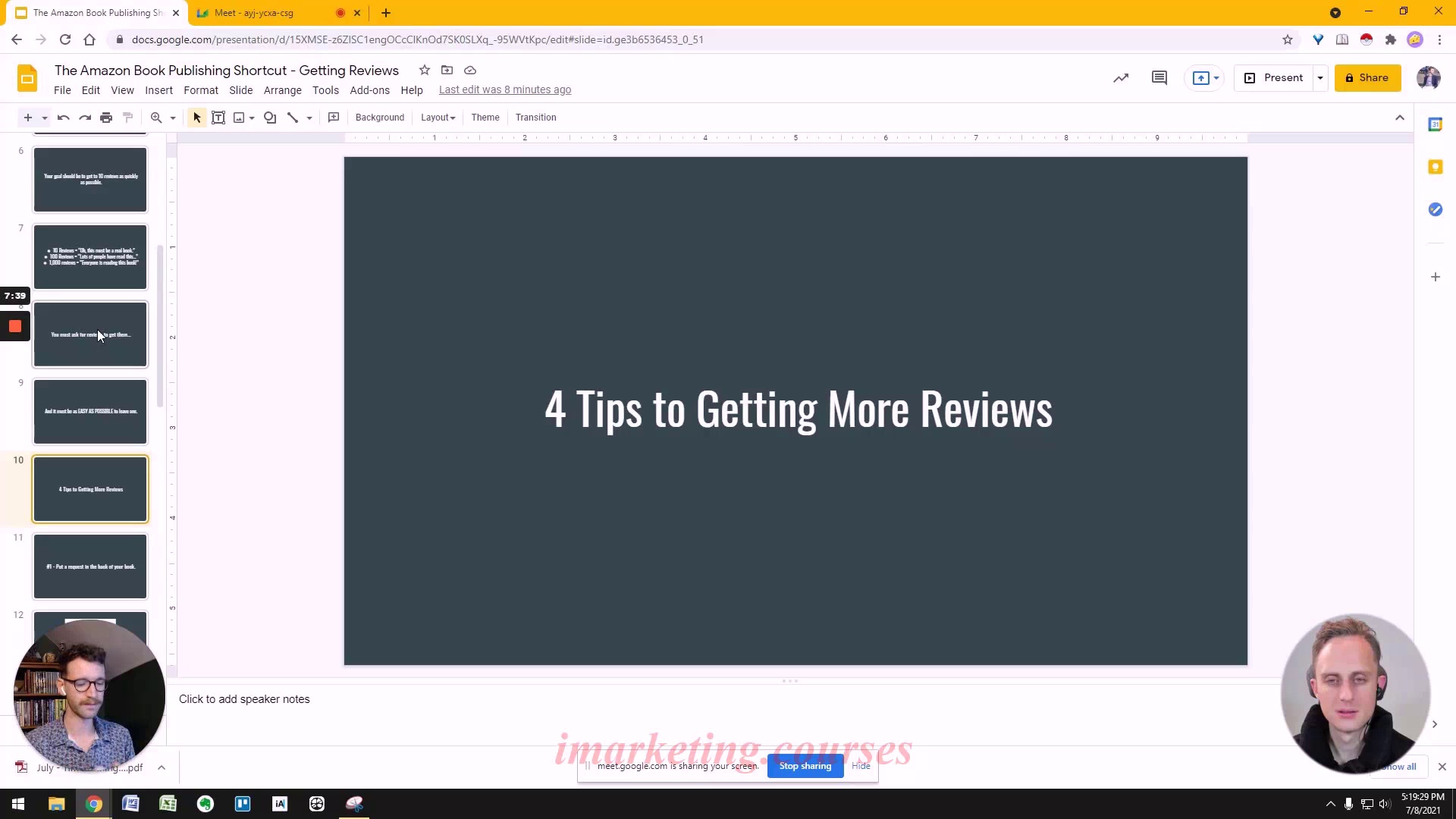
The narrator says the goal of the lesson is to provide simple principles and "ninja tricks" to get more book reviews over time. He notes that books can still sell even without reviews, as the cover and description do a lot of work. However, reviews are good to have.
The narrator recommends trying to get 10 reviews as quickly as possible after publishing a book. He says the 10 review mark is where people start to perceive a book as "real". Books with 100+ reviews sell more copies than those with fewer. Getting 1,000 reviews takes a lot of work even for famous authors.
To get reviews, you have to ask for them and make it very easy for someone to leave one. The narrator explains how cumbersome the Amazon review process is. His goal is to ask for reviews while streamlining the process as much as possible.
Without asking, the narrator estimates authors get around 1 review for every 200 book sales. He explains how Amazon prompts Kindle readers to leave reviews, but there are still multiple clicks required. So the baseline without extra effort is around 1 review per 200 sales.
.Tim-D-AmazonBookPubl 8.1 to 9.3 - Part 4


































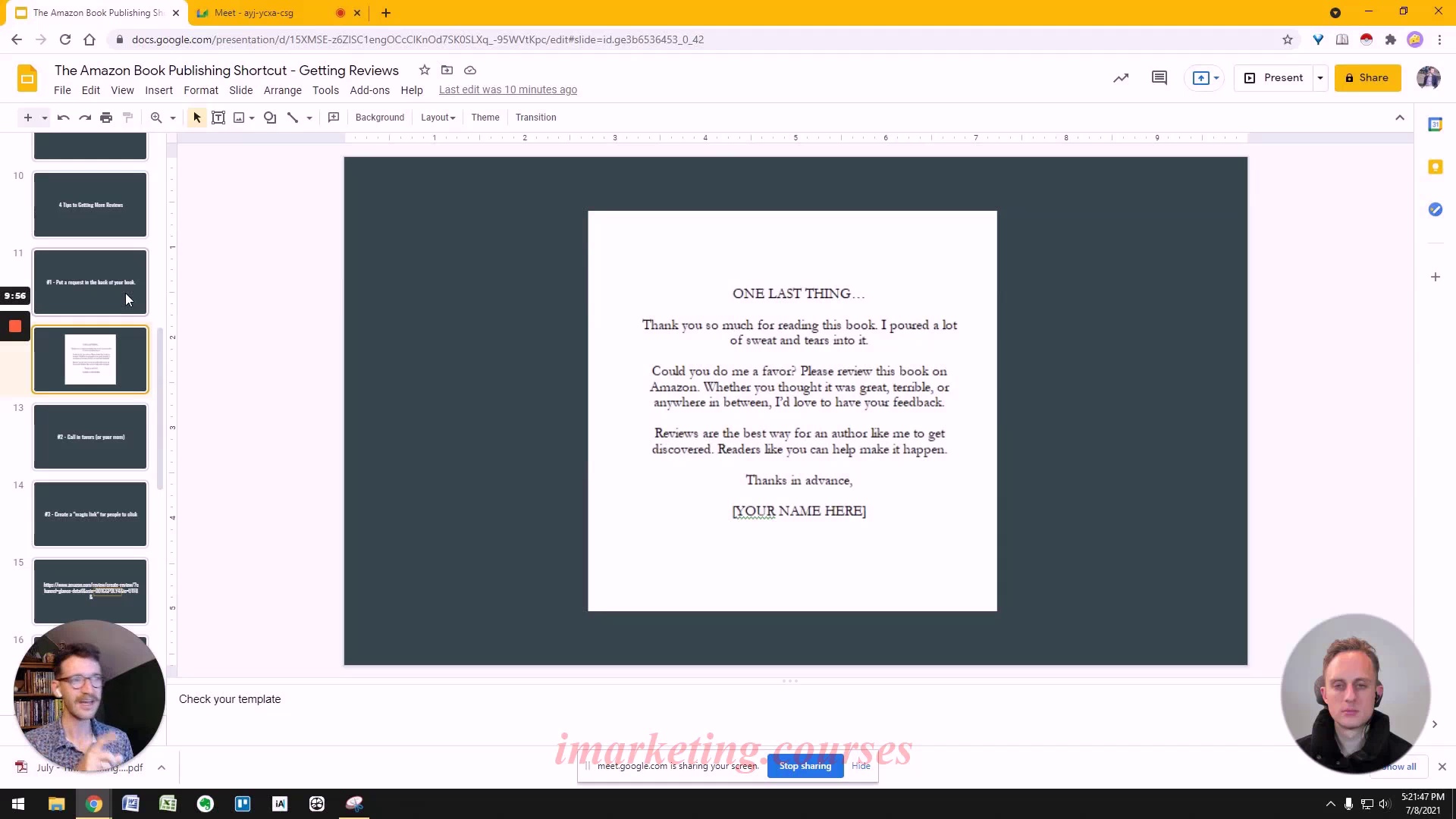
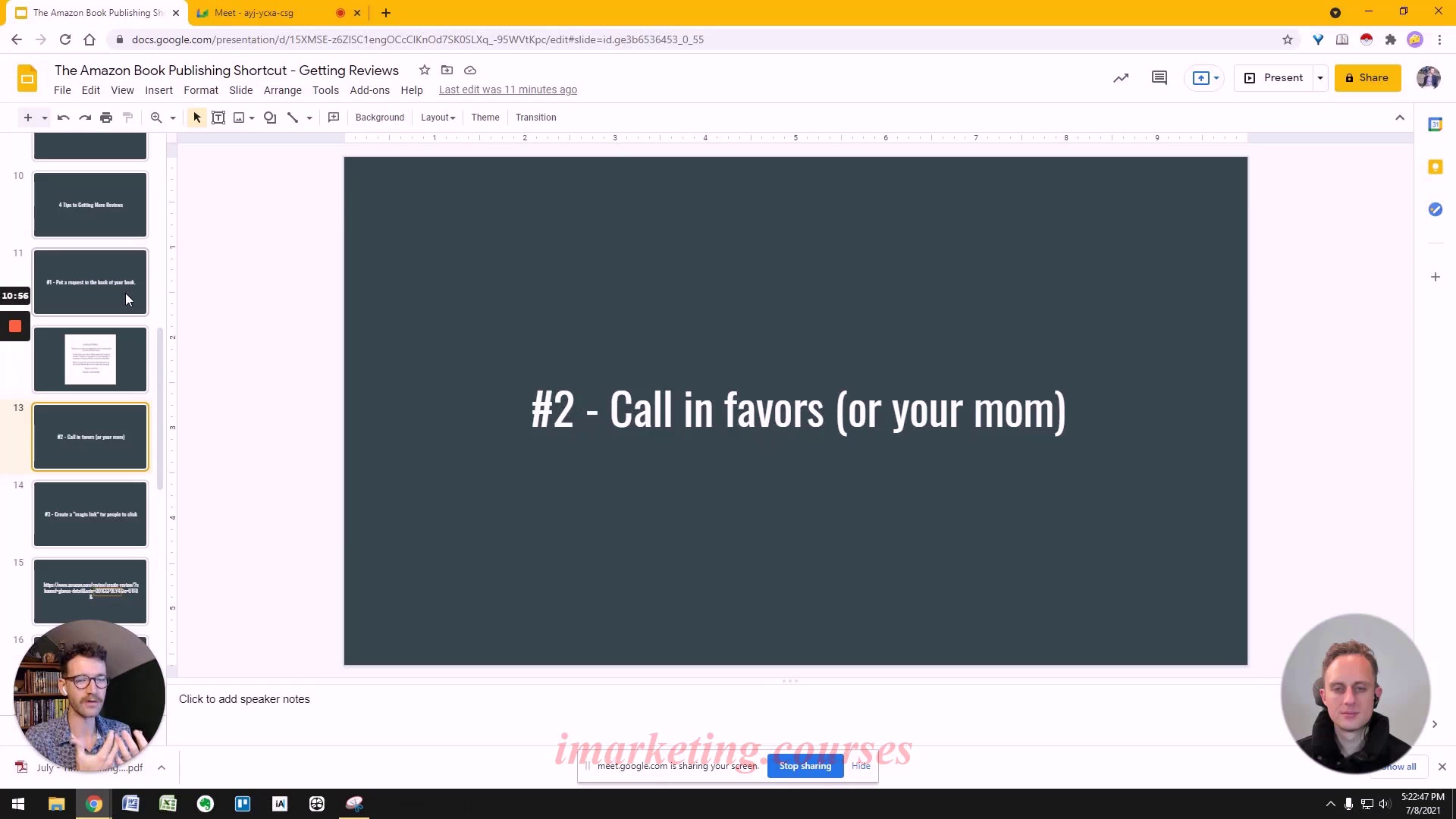
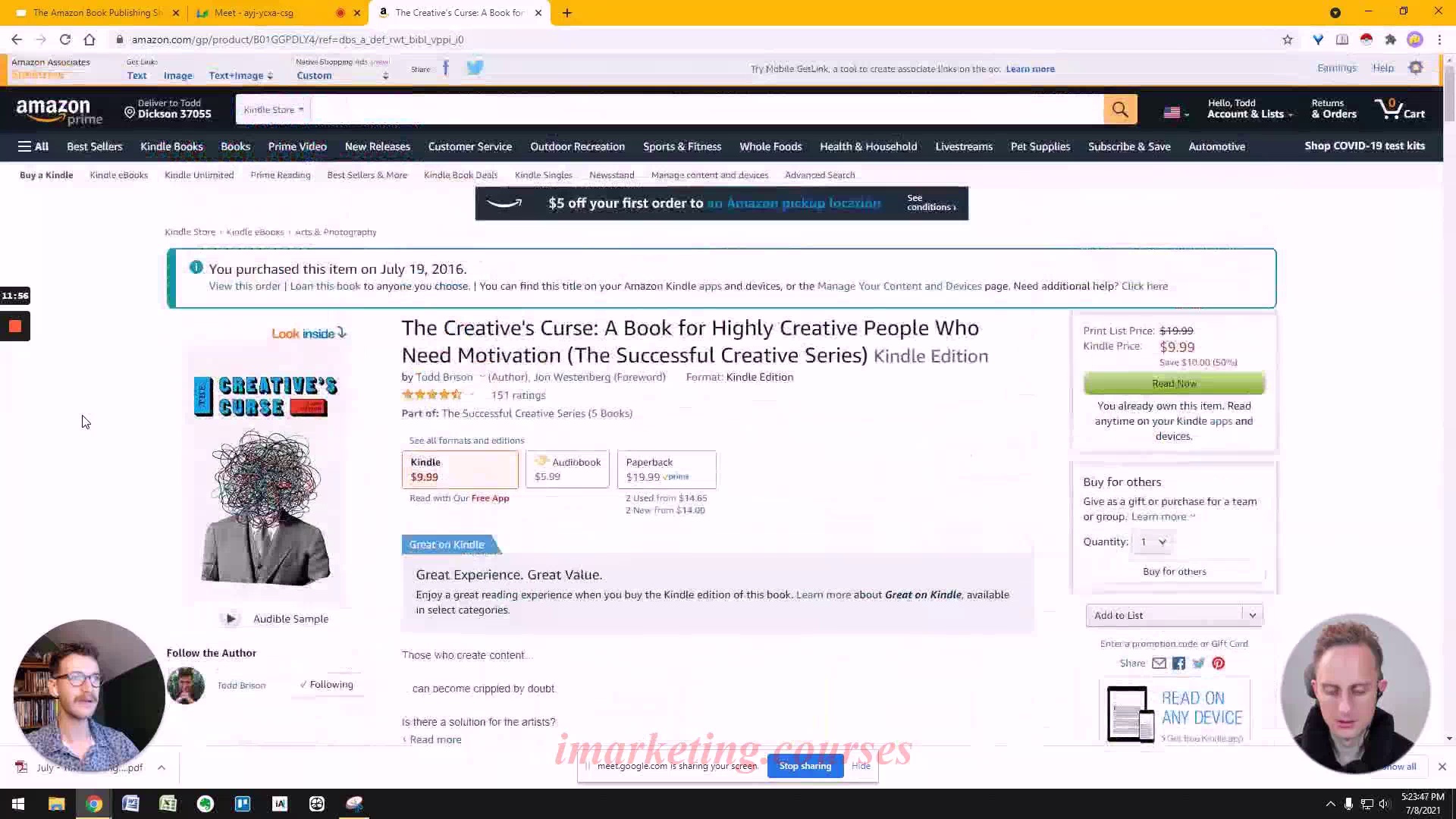
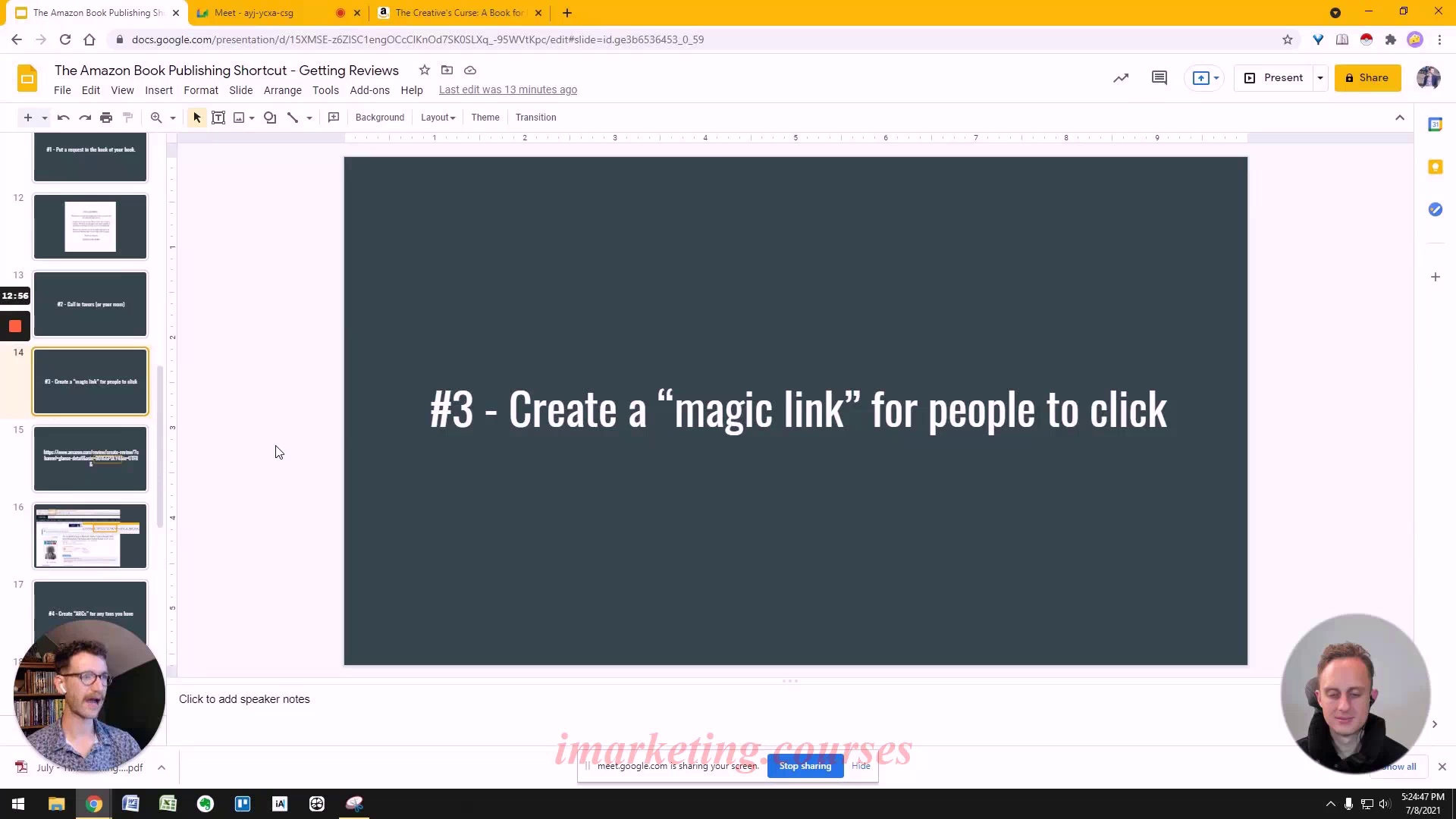
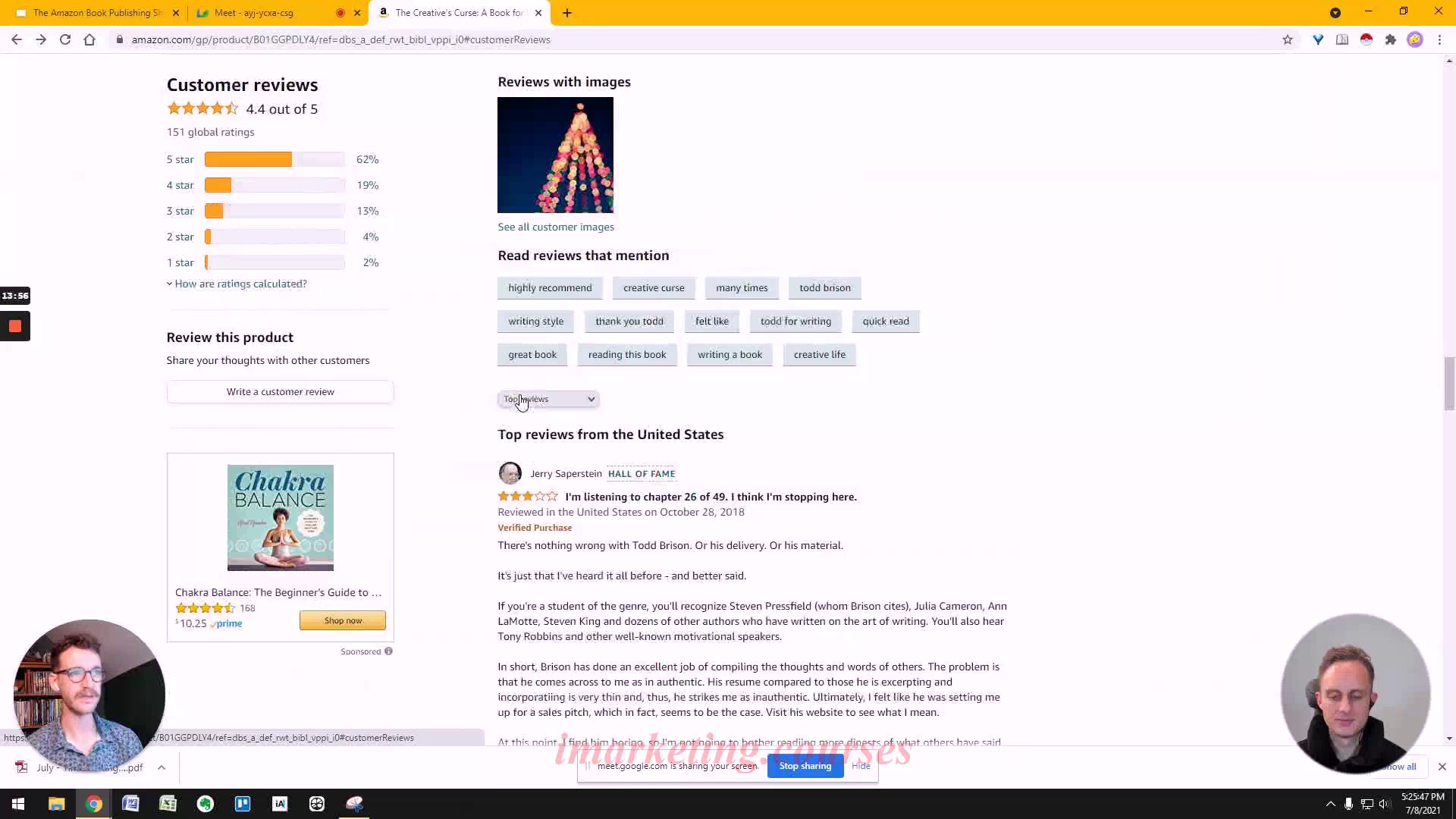
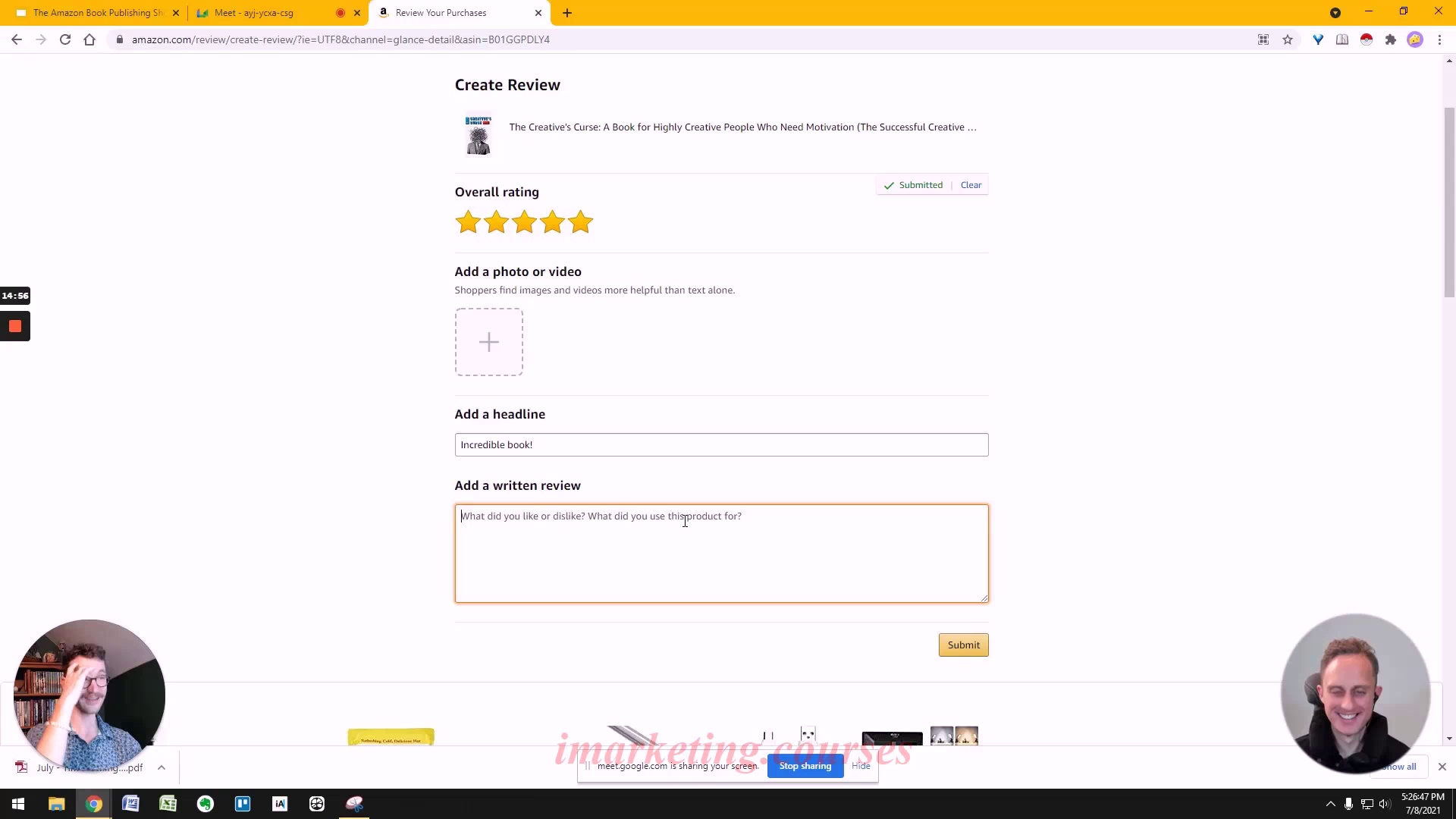
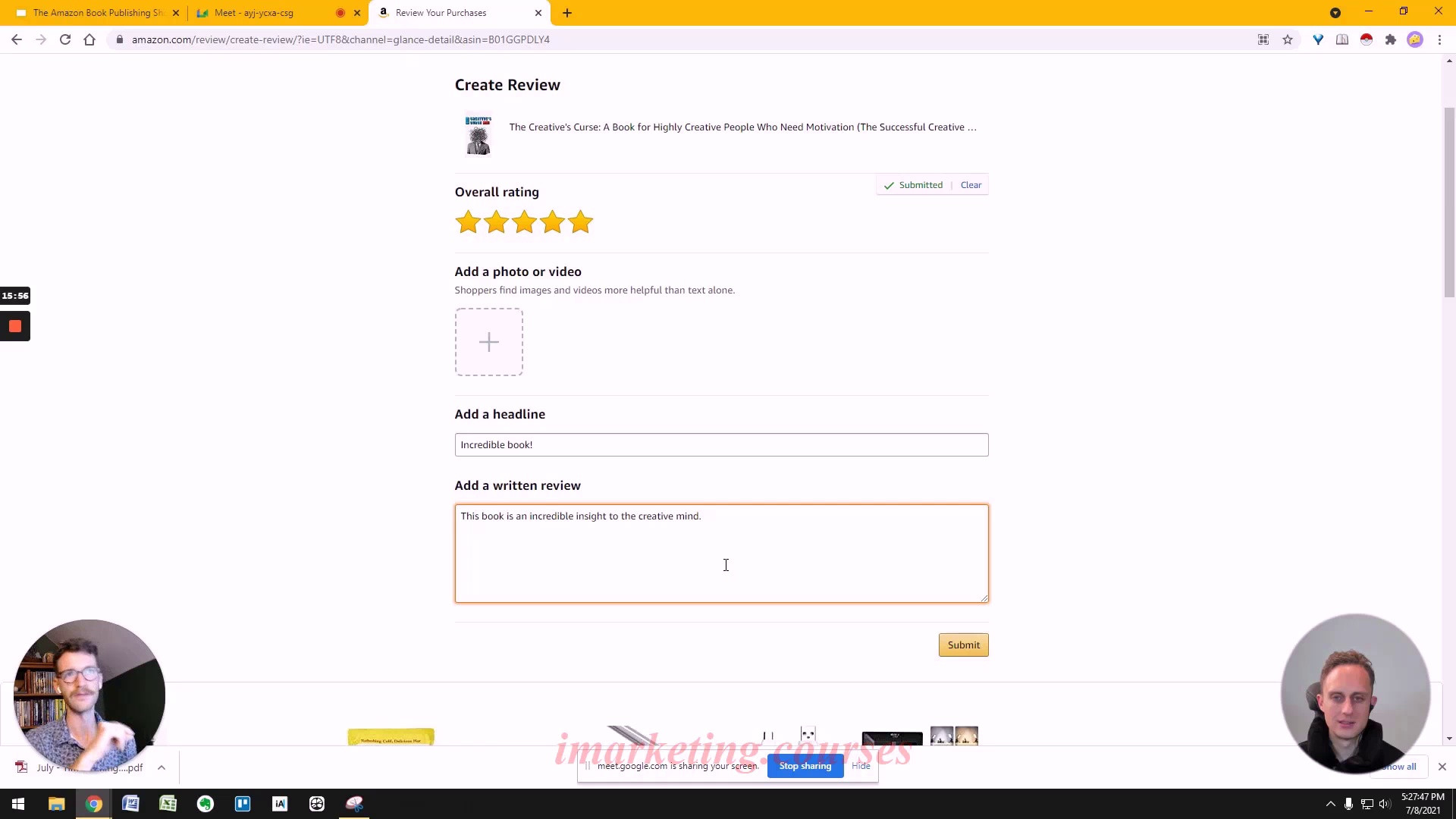
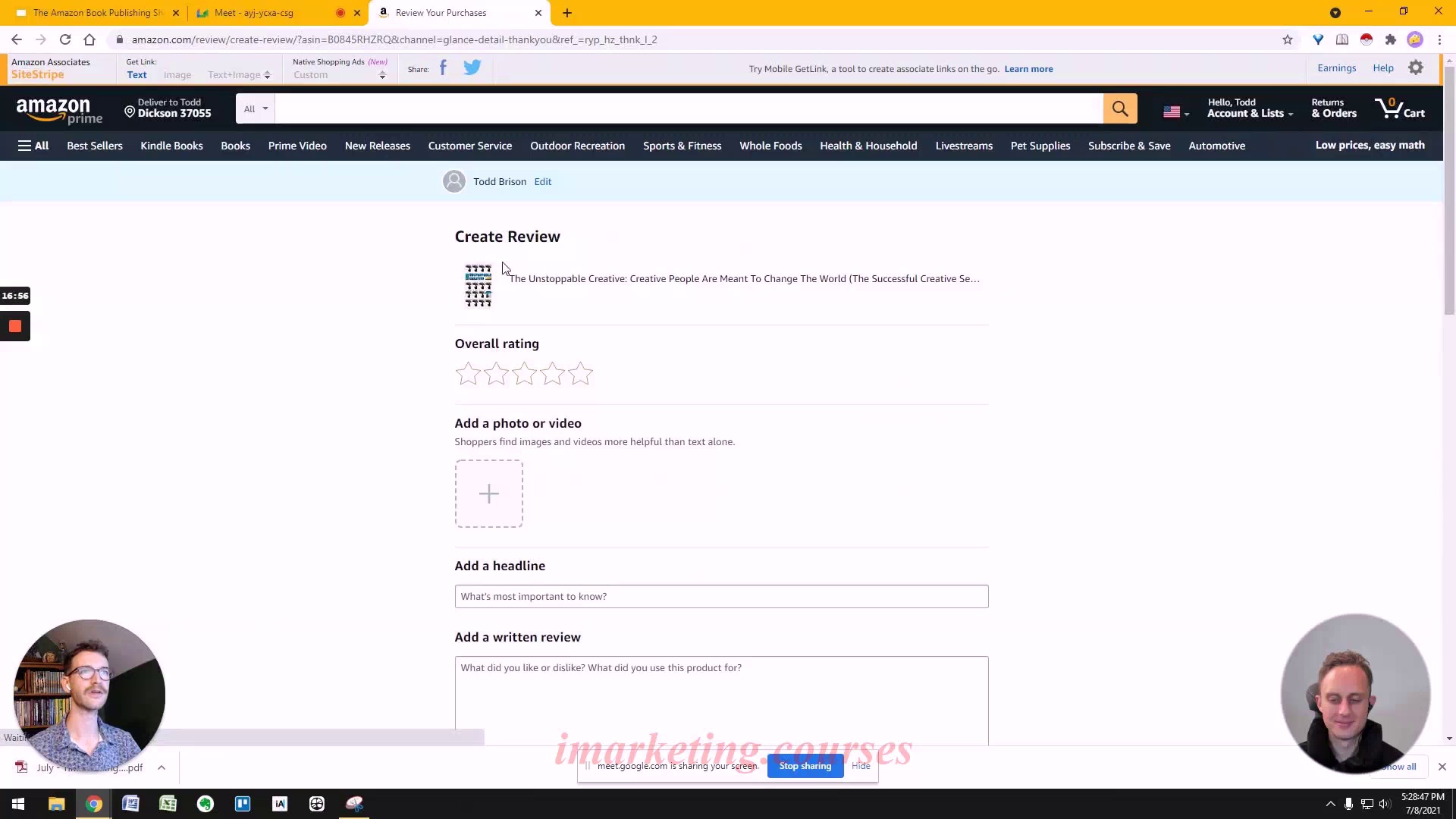
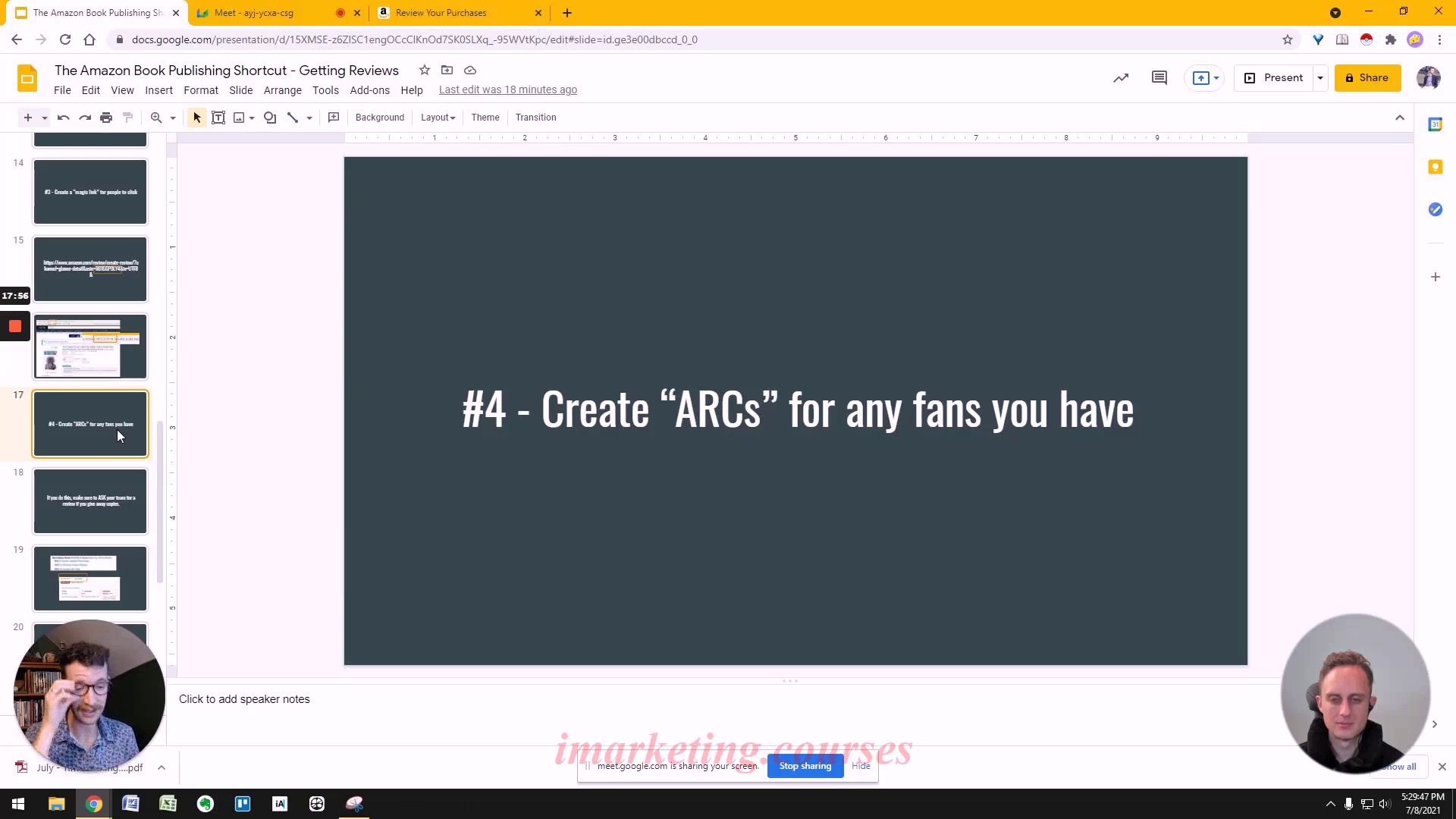
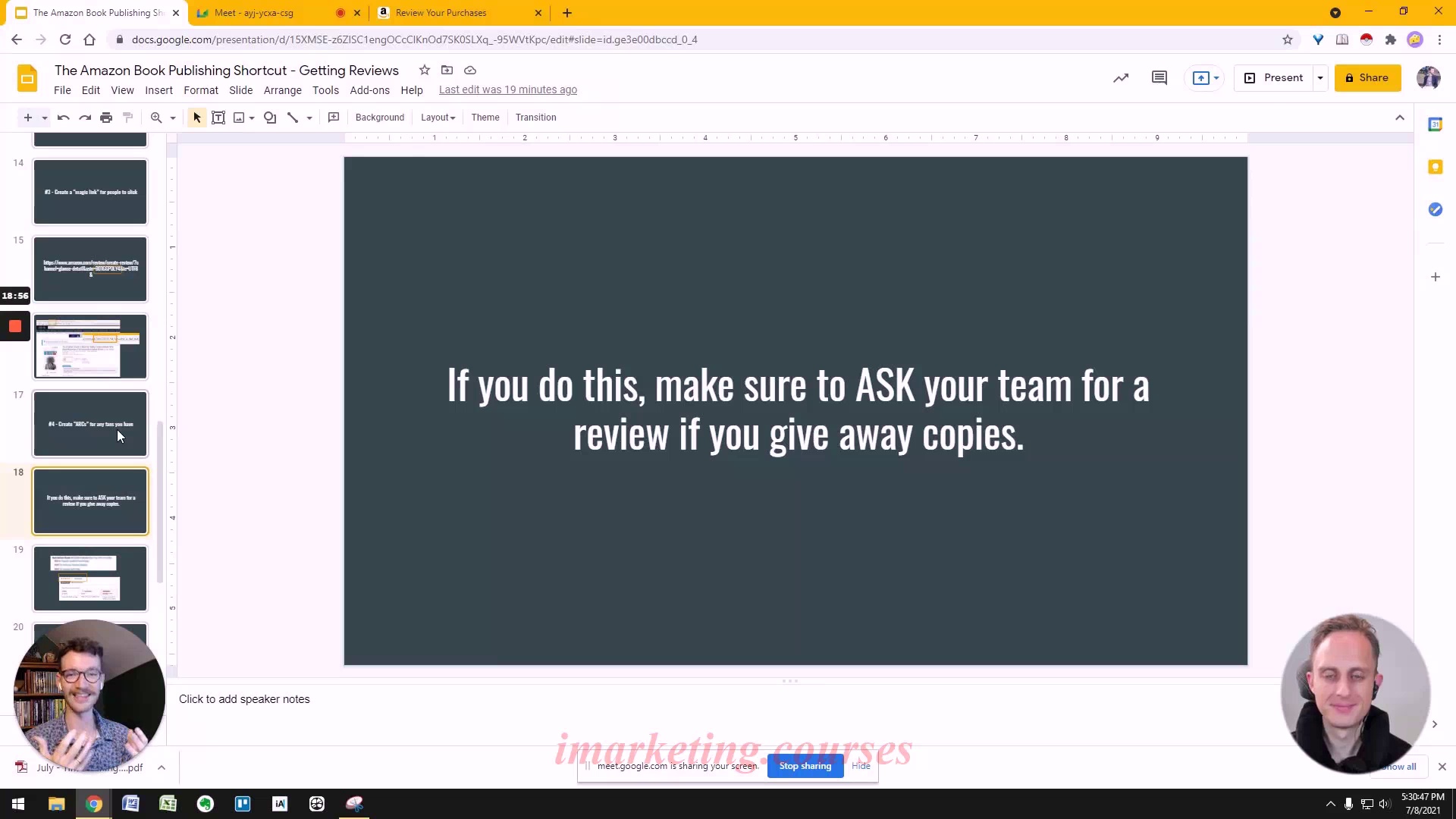
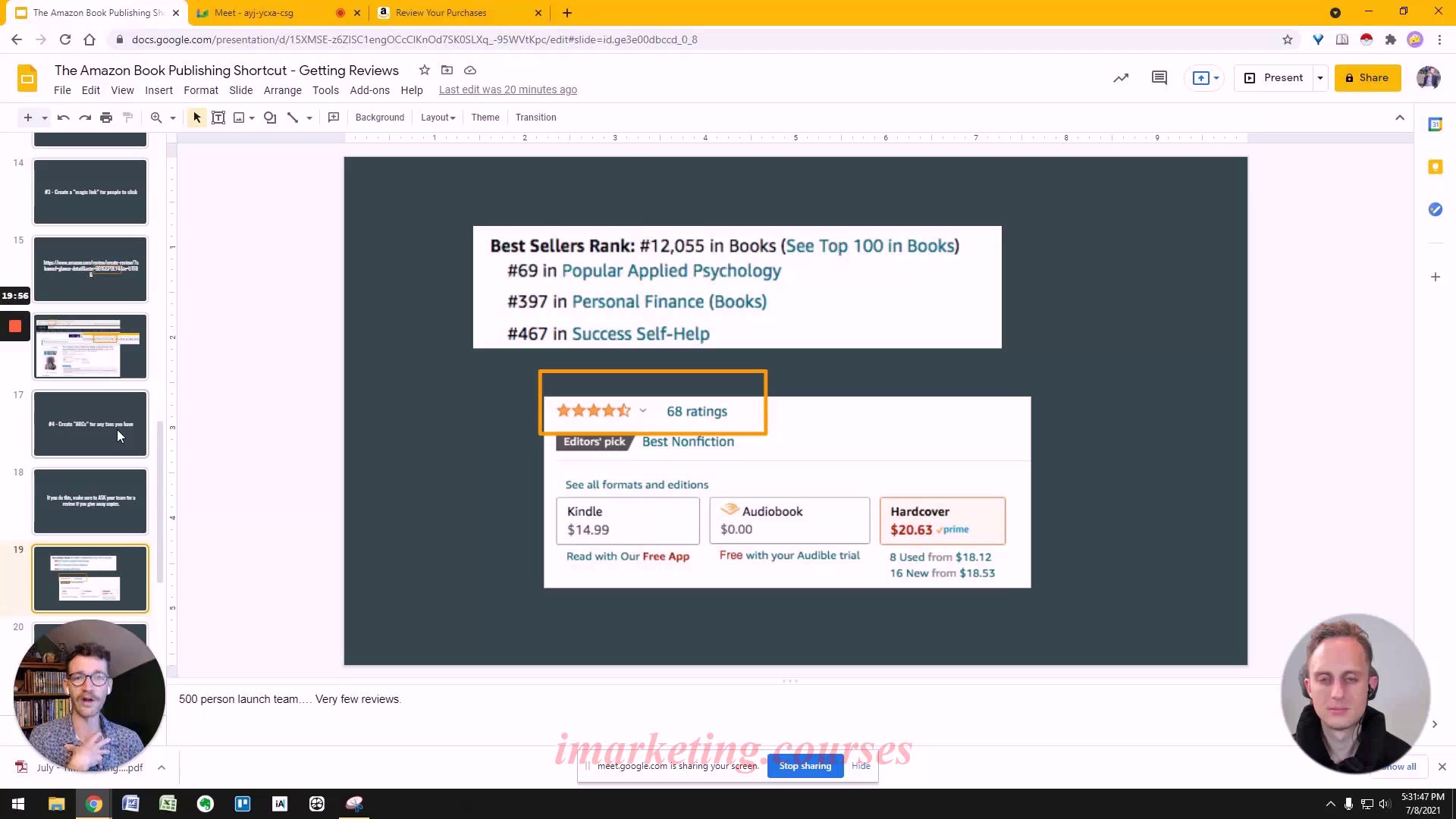
The narrator provides four main tips for getting more book reviews on Amazon:
1. Put a review request at the end of your book. This prompts readers to leave a review after finishing. Use a specific template provided in the course materials.
2. Ask for reviews from friends and family. Leverage your personal network to get those initial reviews to build credibility.
3. Create a direct review link. Don't just send people to the Amazon page - generate a direct link to the review submission form to make it easier for them.
4. Build an advanced reader team. Give advance copies to engaged readers in exchange for leaving an honest review when the book launches. Remember to explicitly ask for the review.
.Tim-D-AmazonBookPubl 8.1 to 9.3 - Part 5














































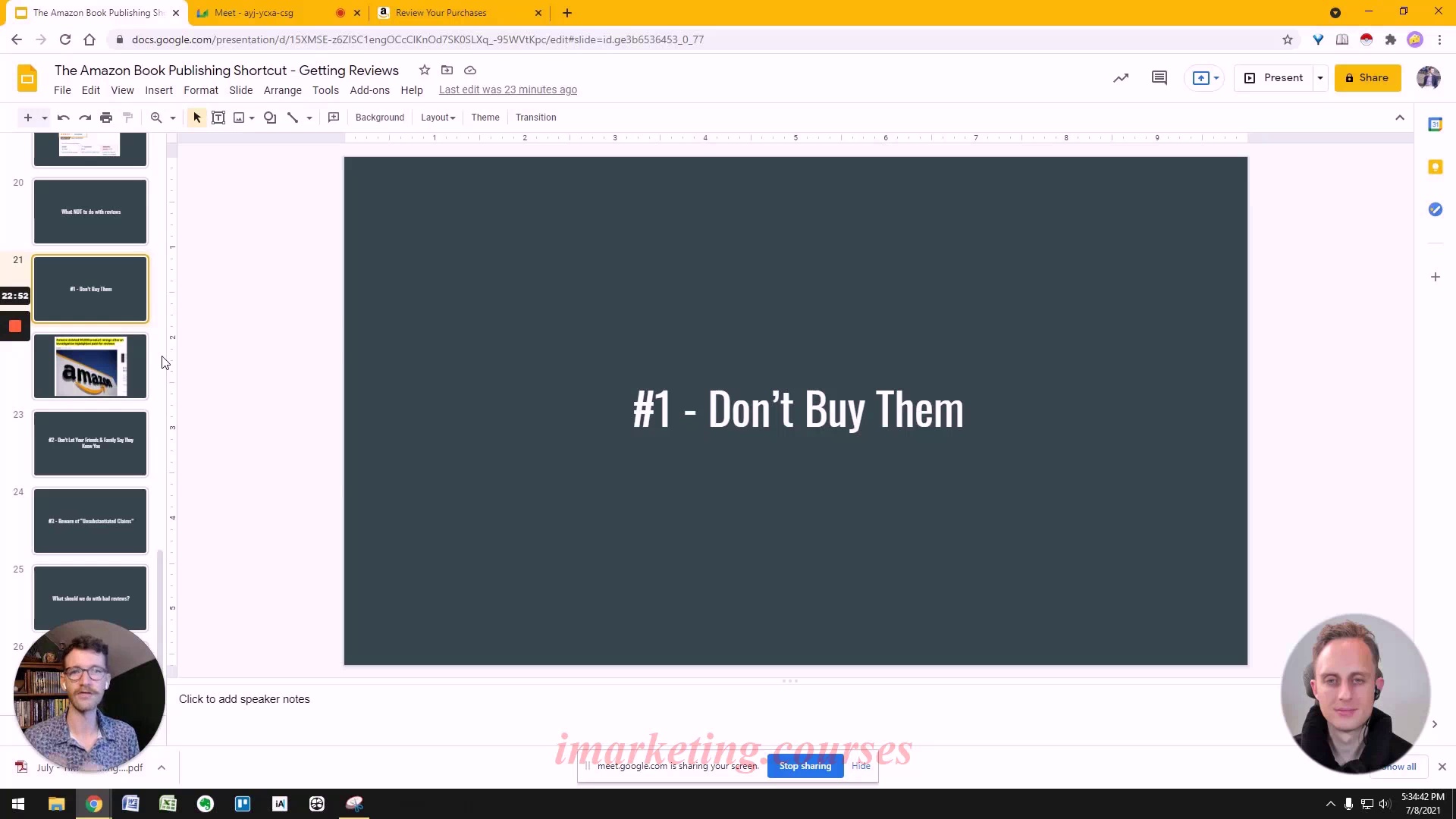
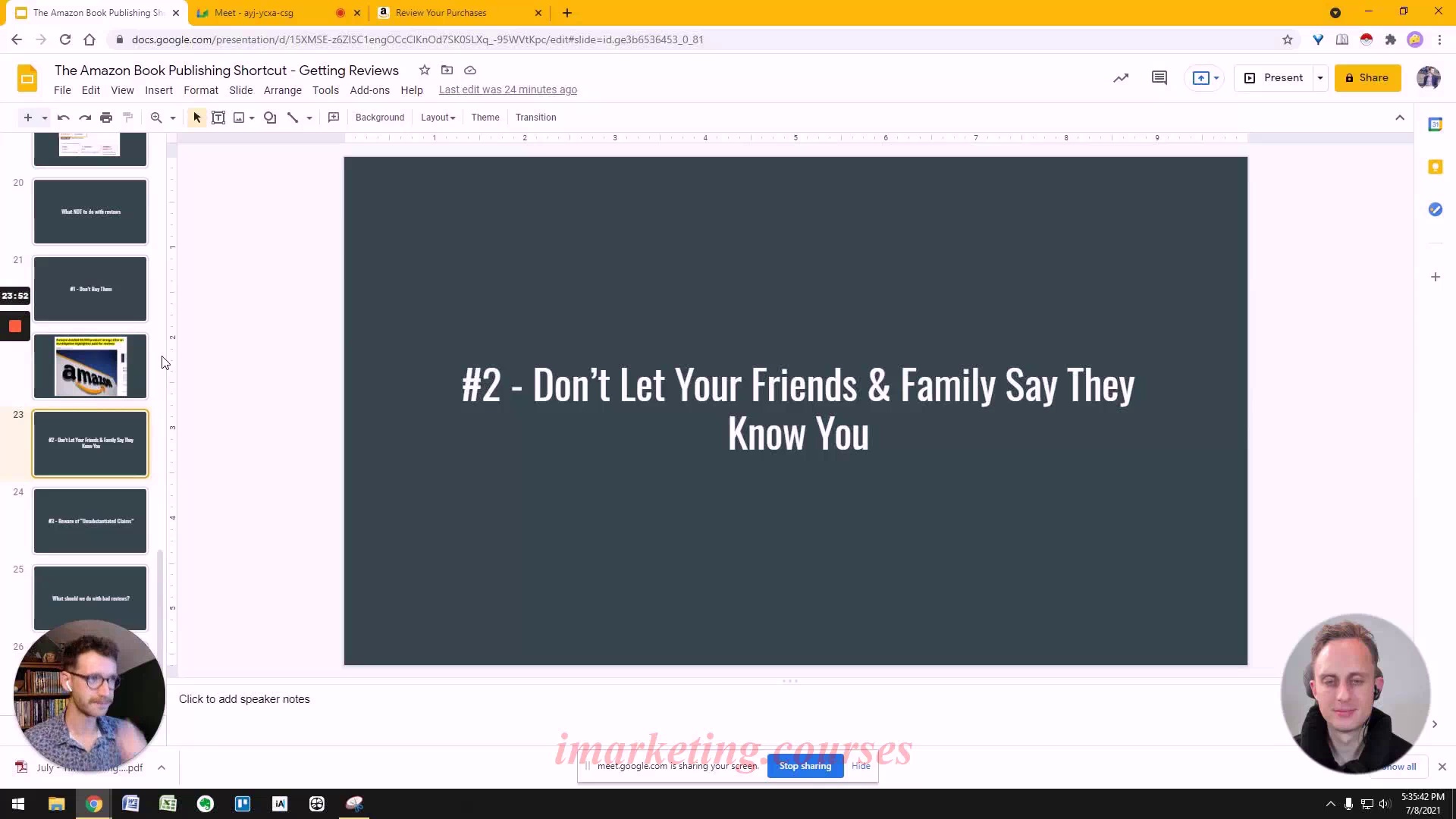
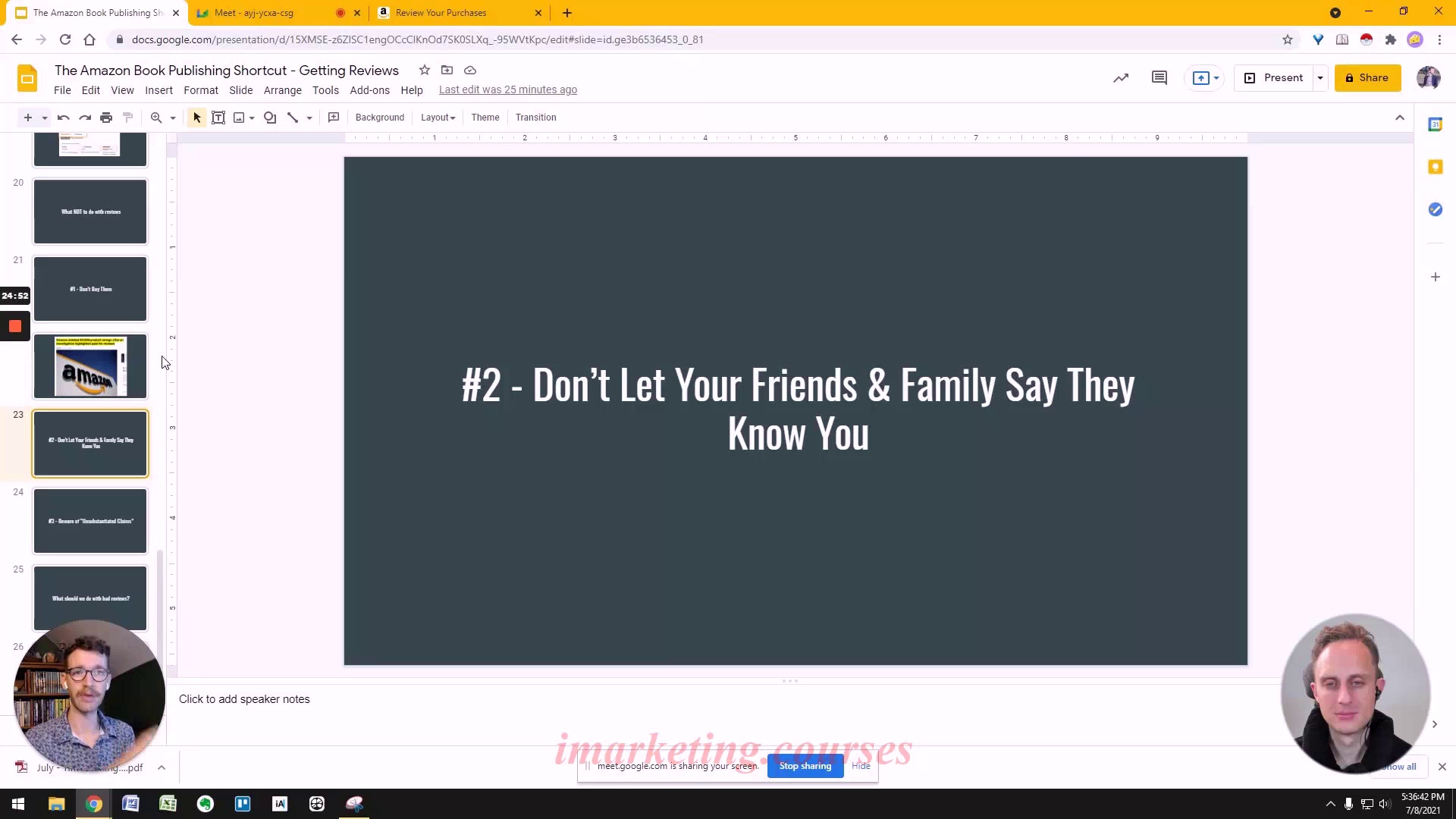
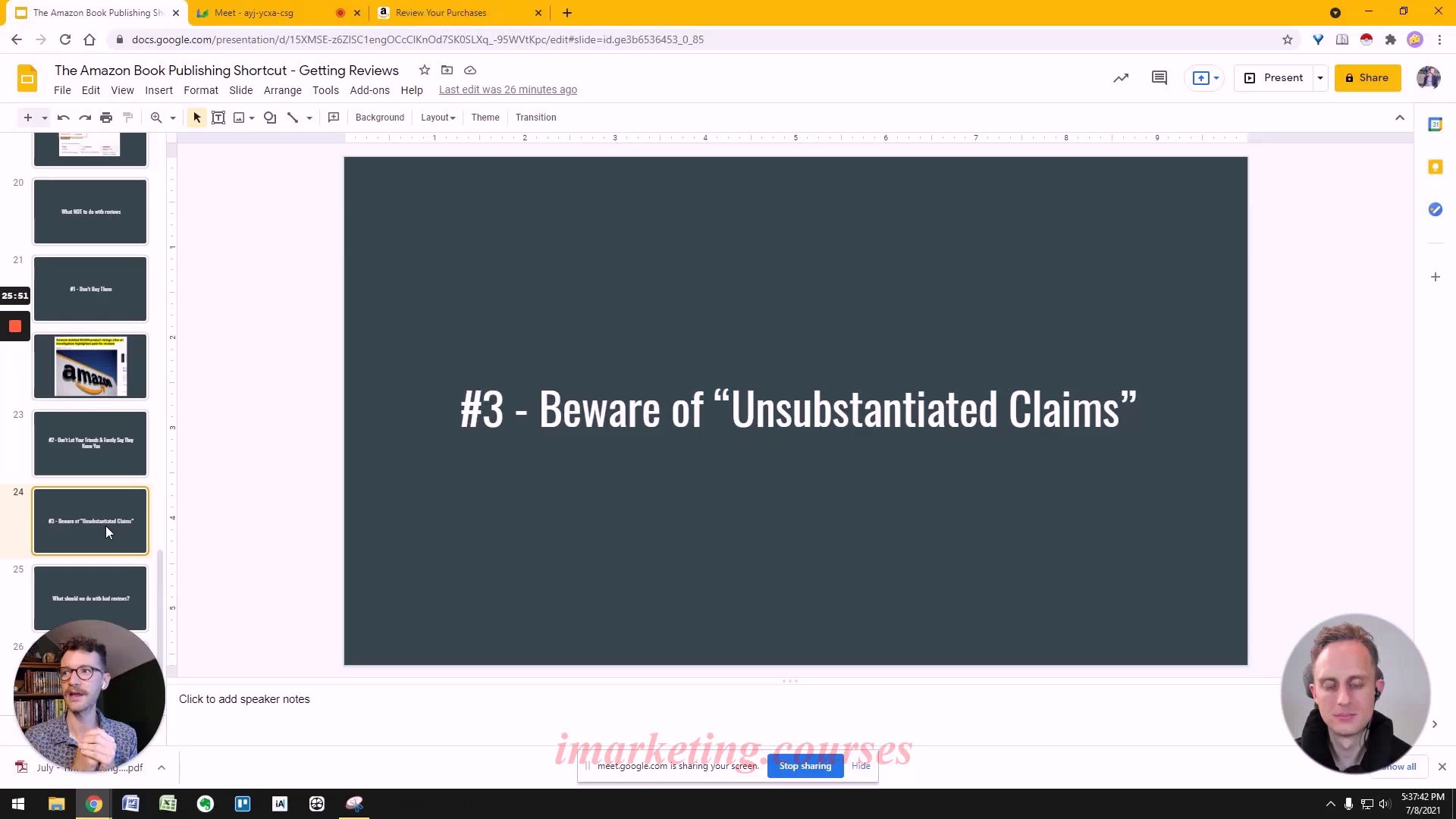
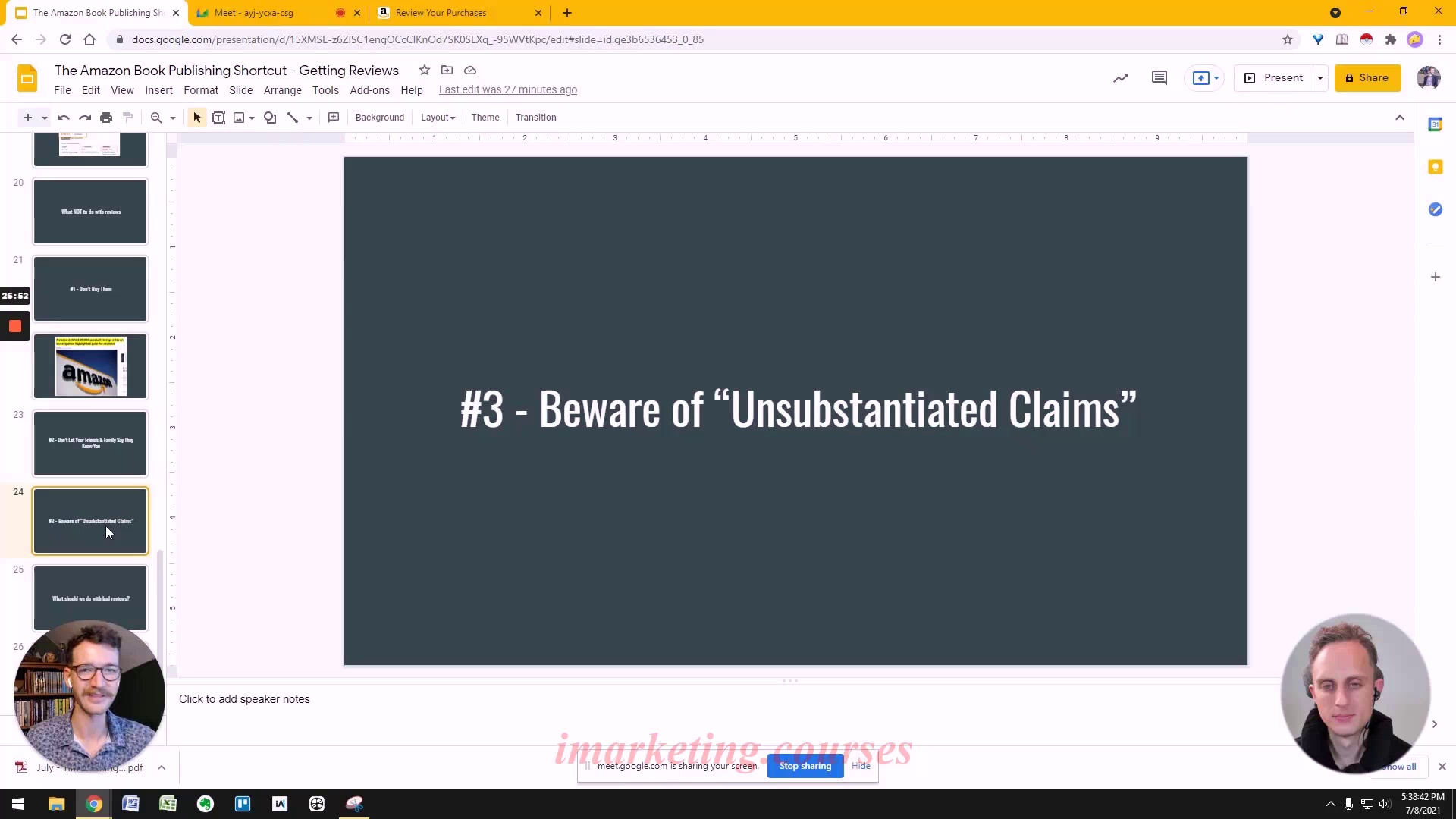
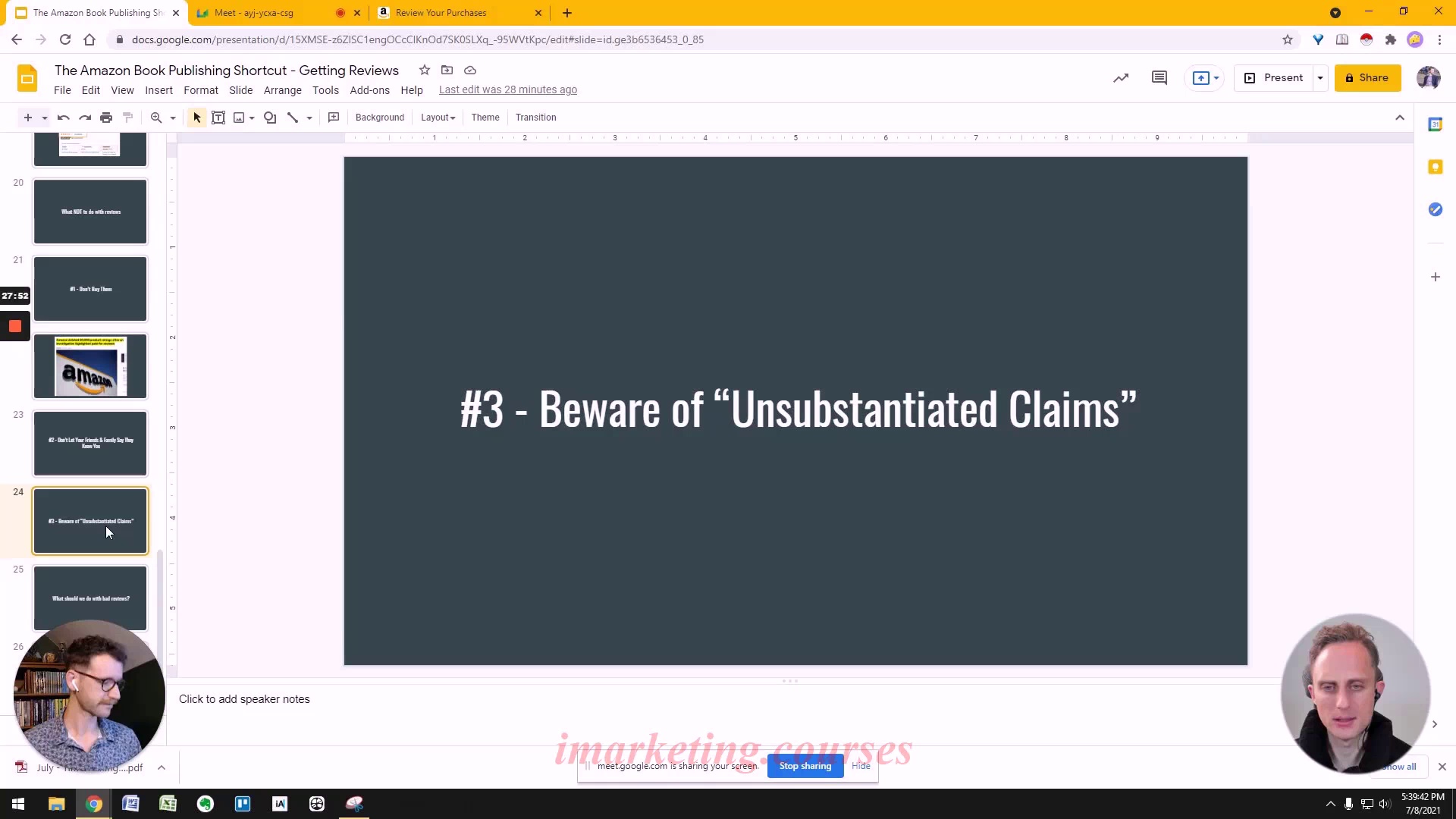
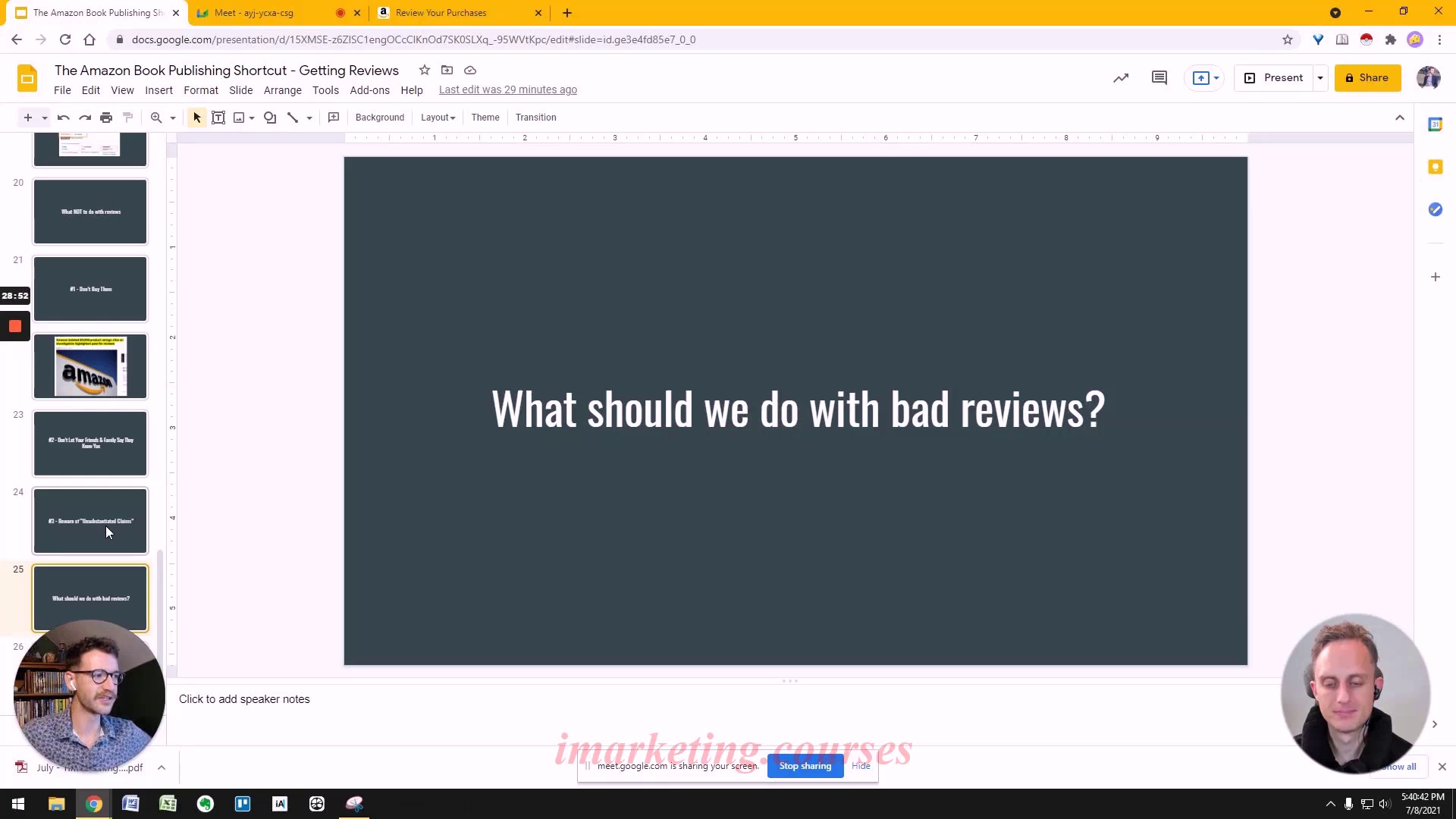
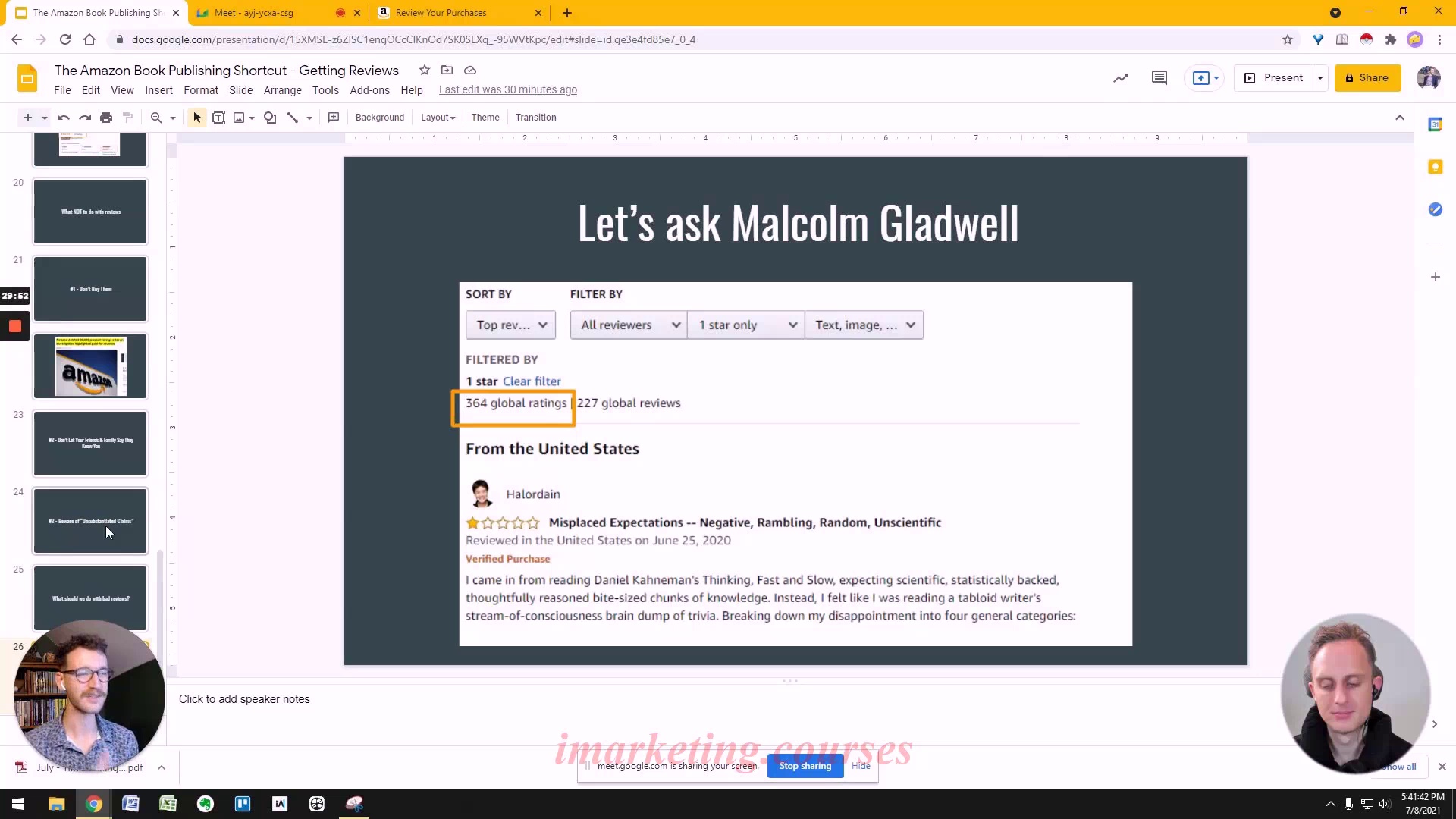
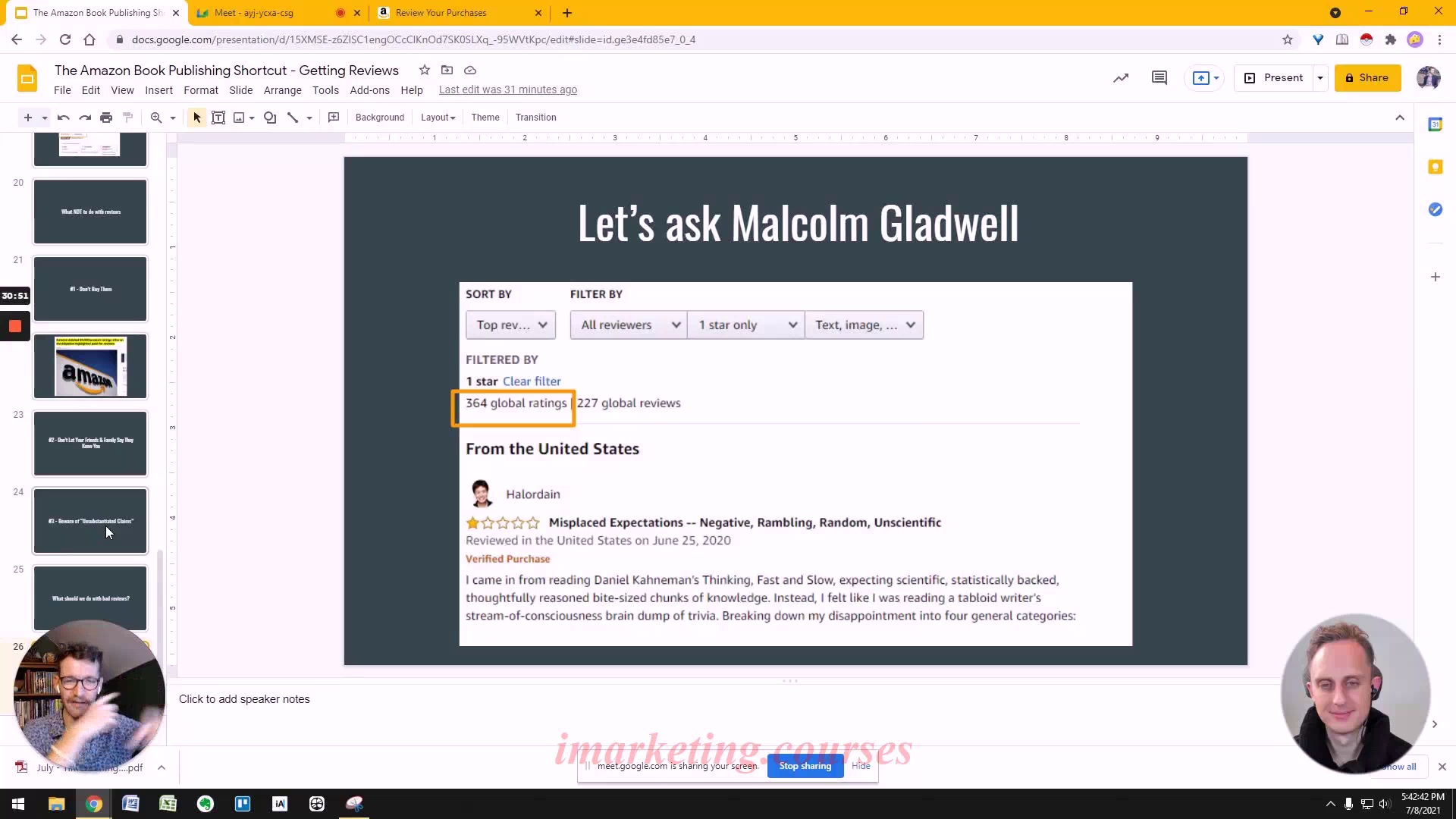
Amazon cracks down hard on fake or paid reviews. They will remove suspicious reviews and possibly even take down entire books. So don't buy reviews from services promising guaranteed reviews.
When getting reviews from people you know, tell them not to mention their relationship to you in the review text. Amazon wants unbiased reviews from readers, not friends and family.
Avoid unsubstantiated claims in reviews about earning money or other outcomes, as Amazon is wary of legal liability. Claims should be backed up by third parties or stated more generally.
As your book gets more exposure, critical reviews are inevitable. Malcolm Gladwell's books have hundreds of 1-star reviews but are still bestsellers. Some negative reviews can help prove your book has reached a wider audience.
Make it easy for readers by sending a direct link for leaving reviews. Don't make them navigate multiple pages first or many won't bother.
Controversial books with both bad and good reviews can spark debate and boost sales. Don't fear some negative reviews, but address legitimate issues like typos.
.